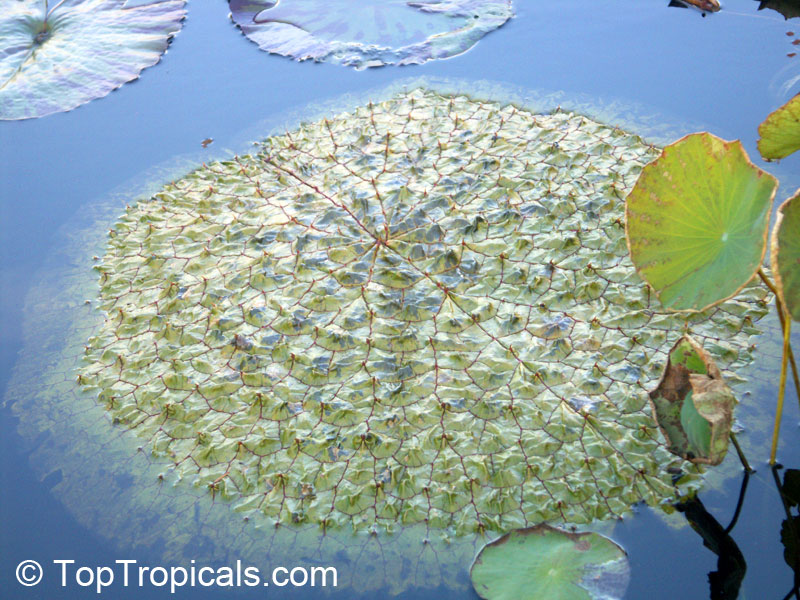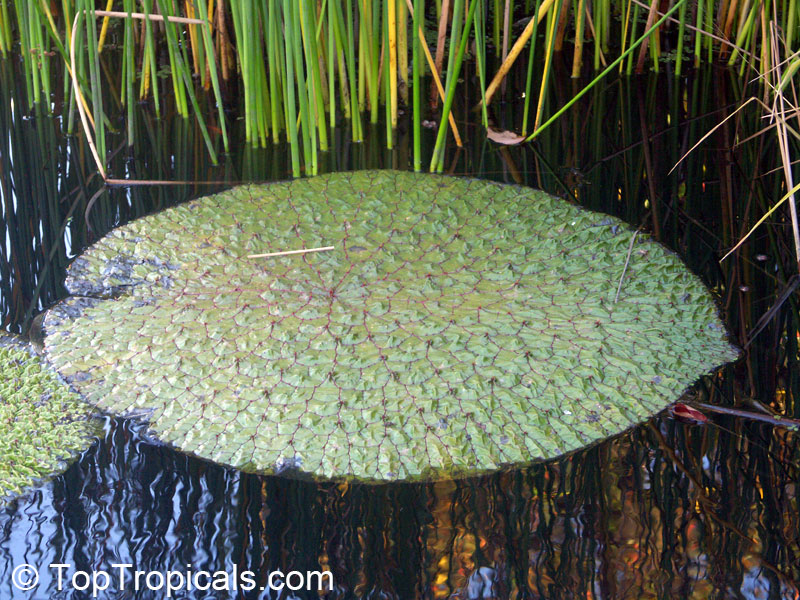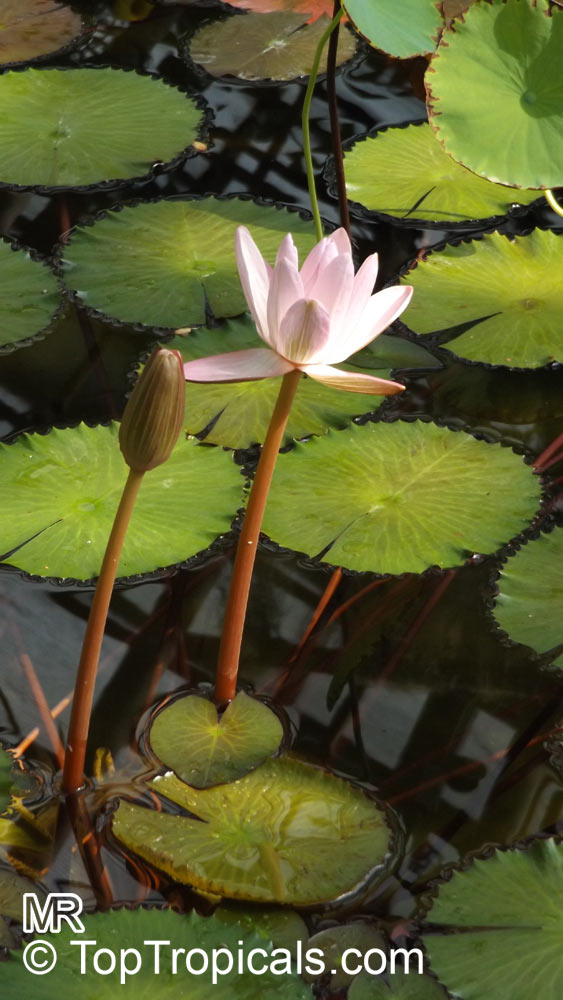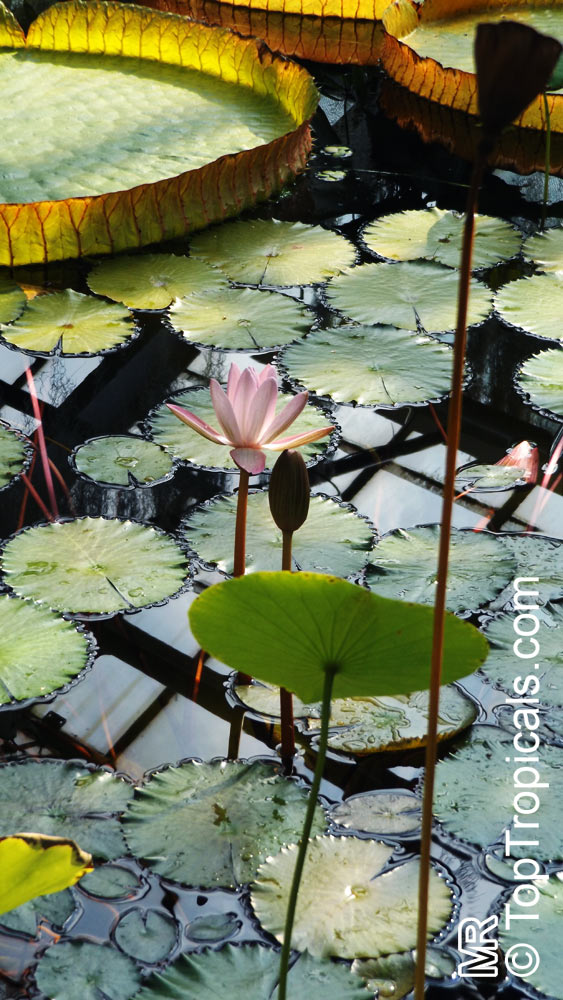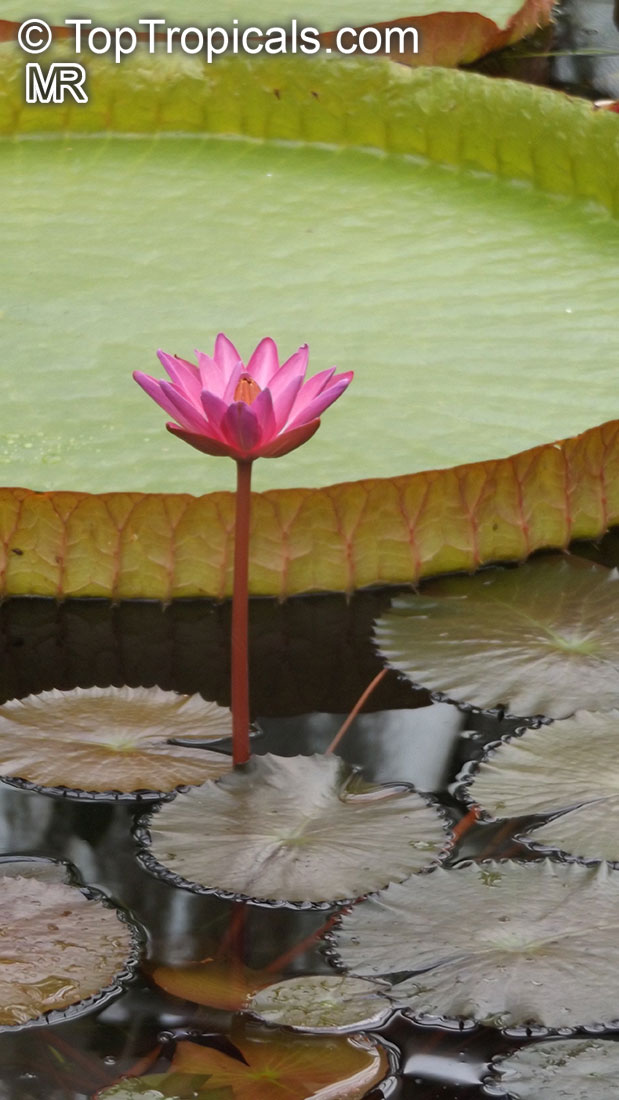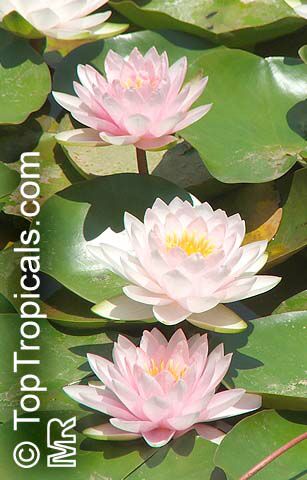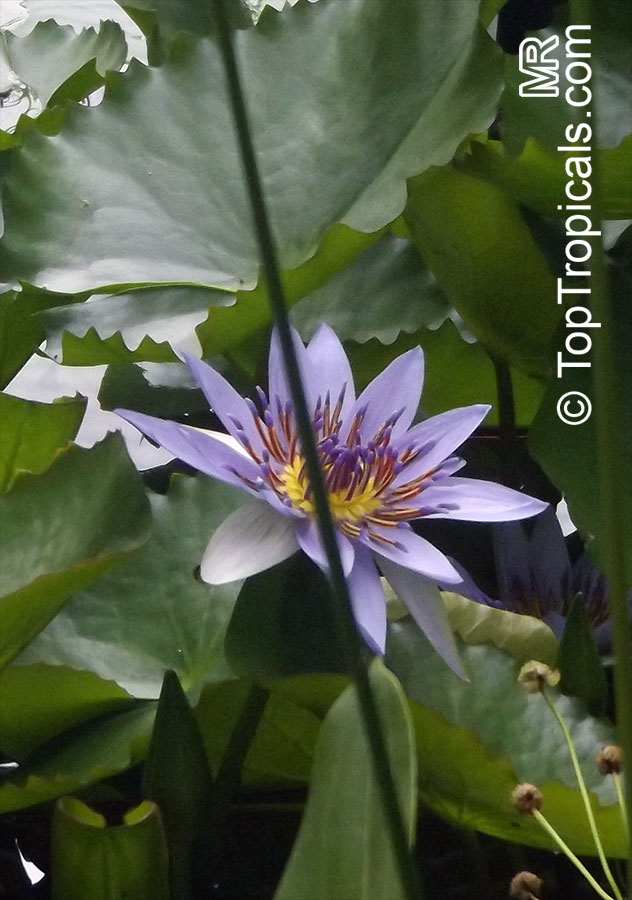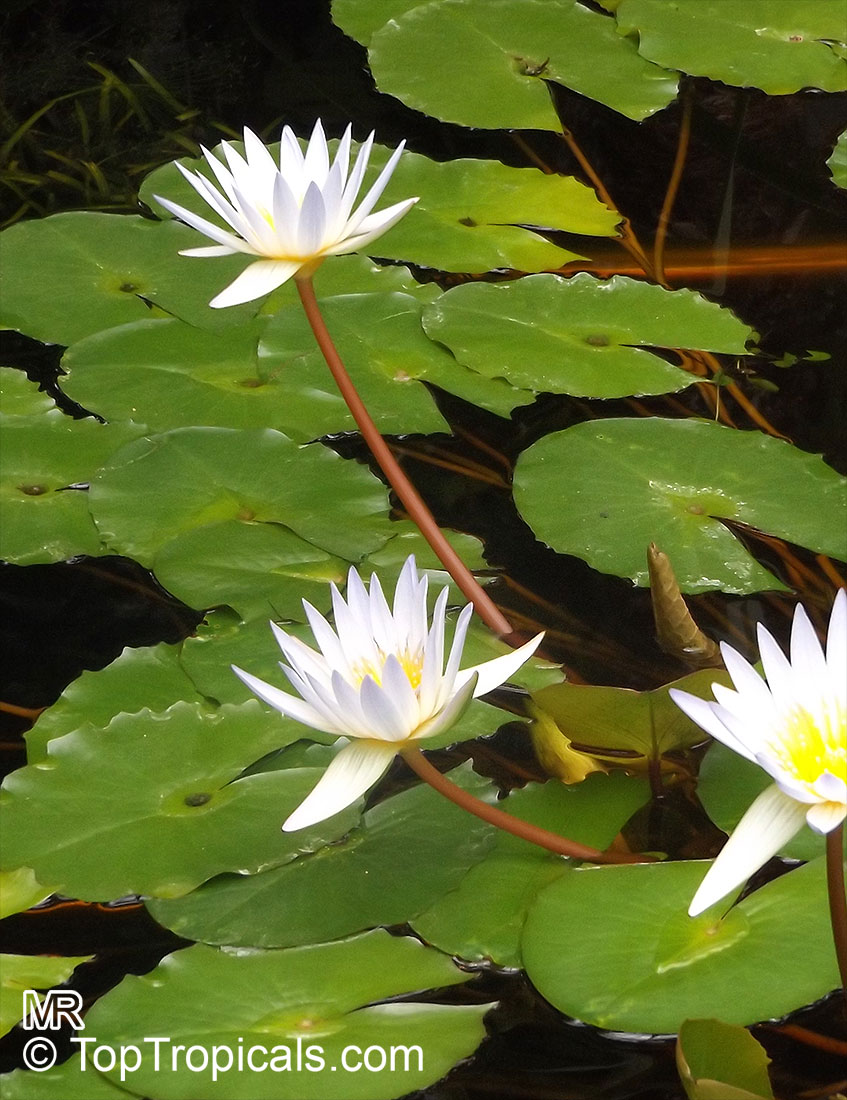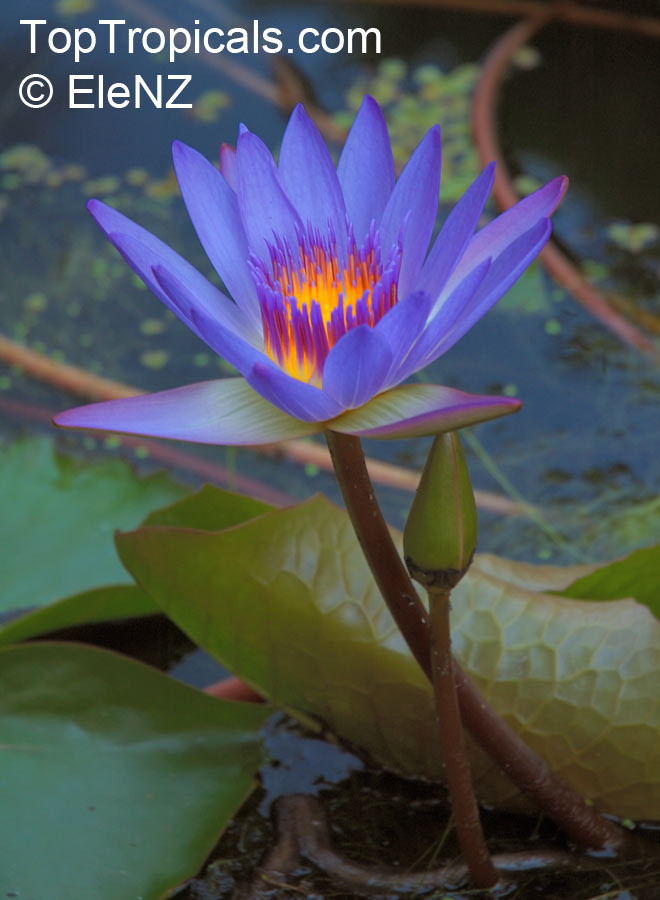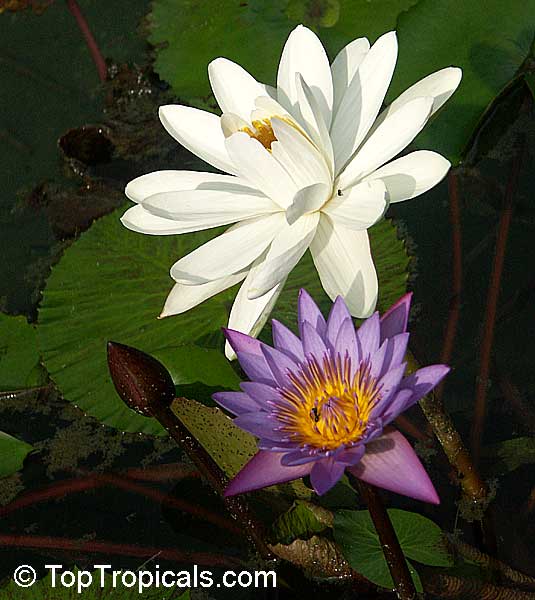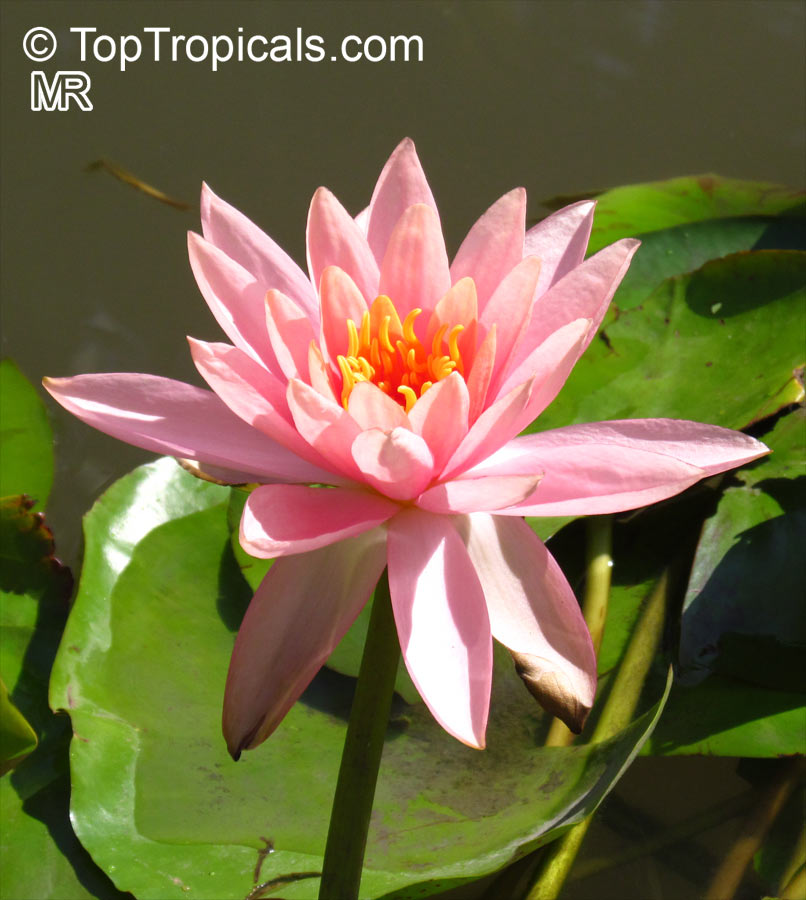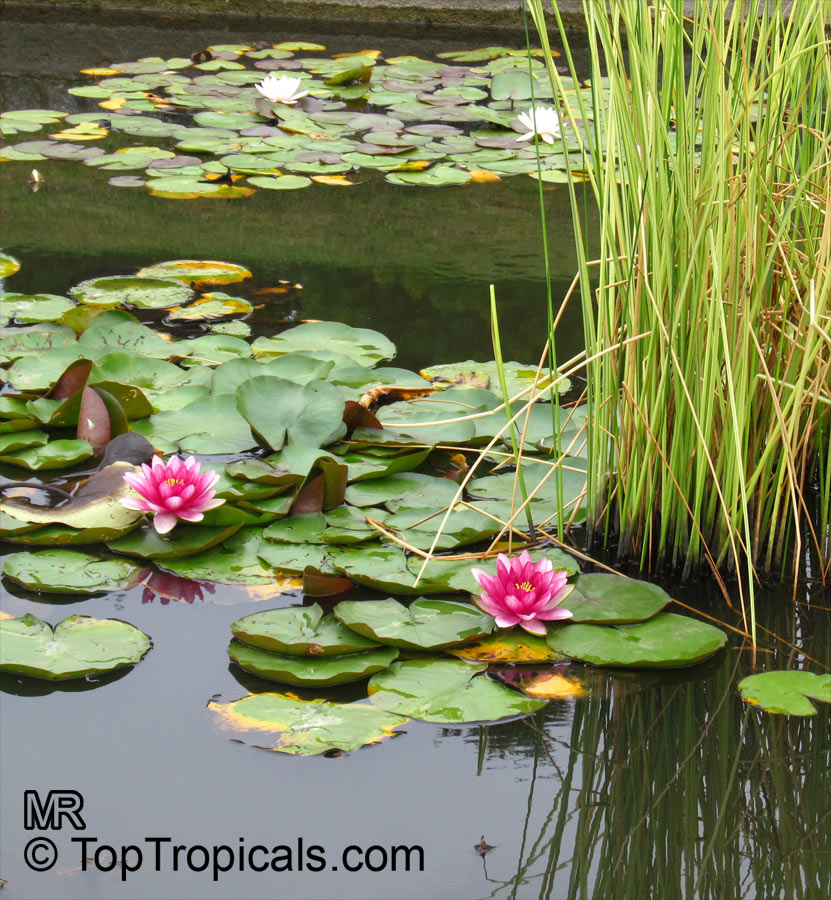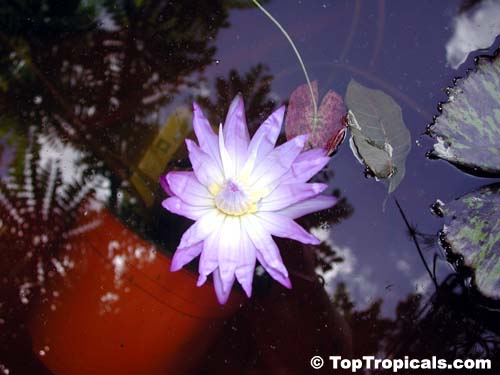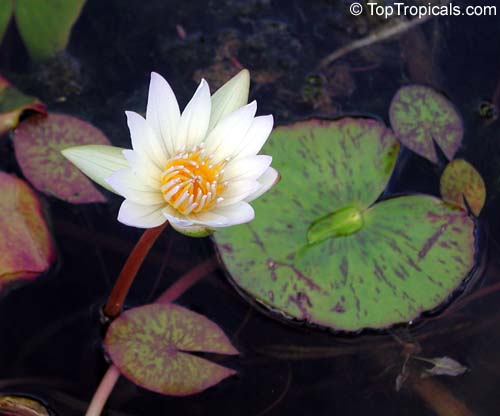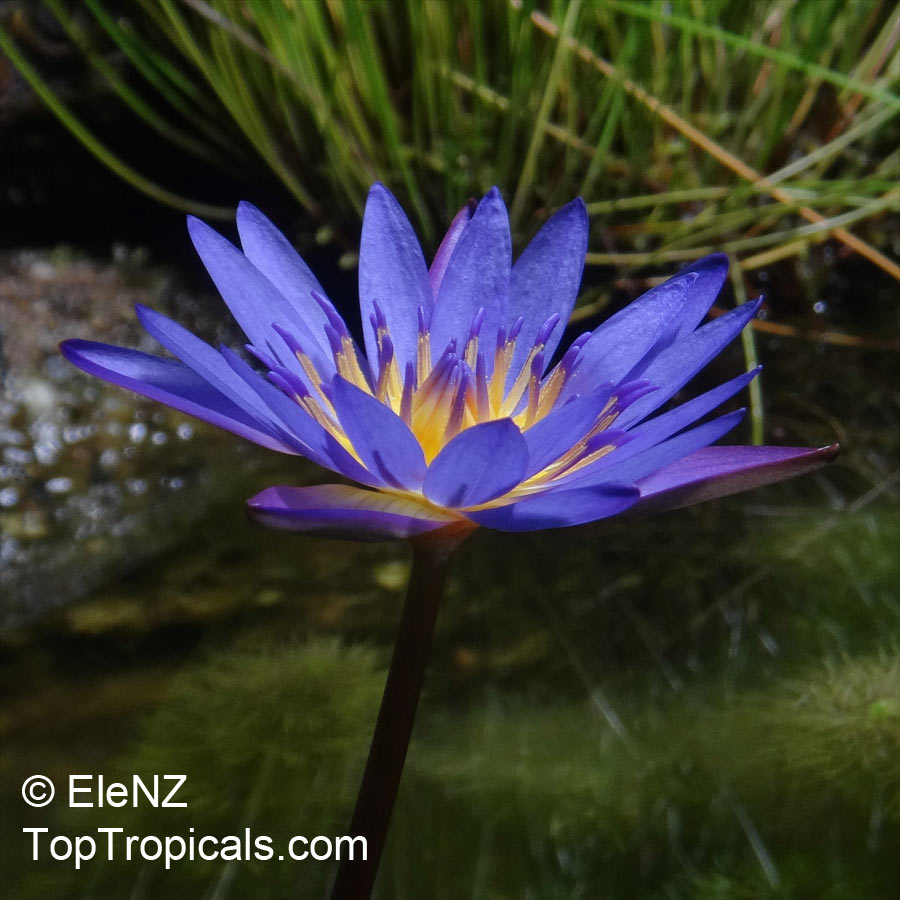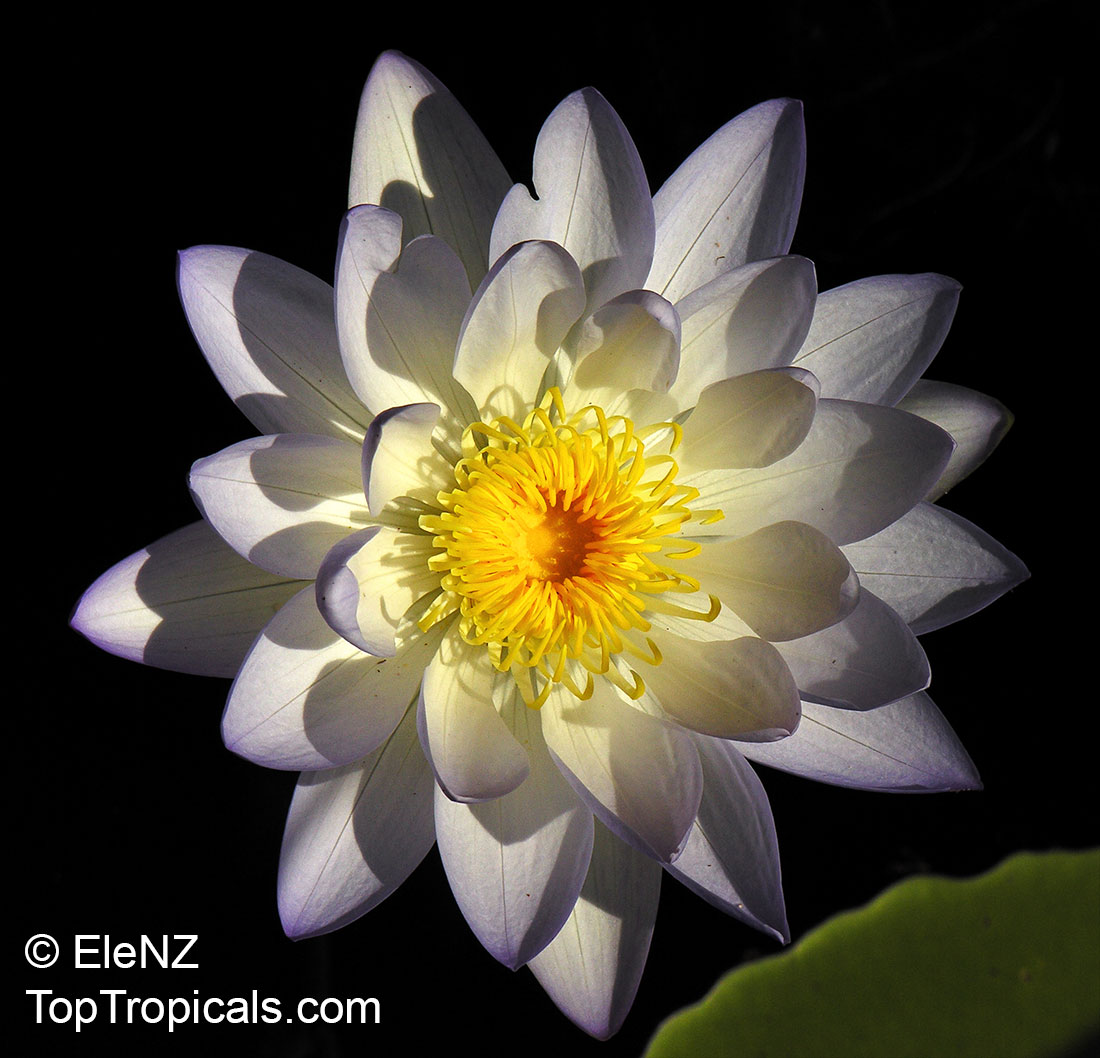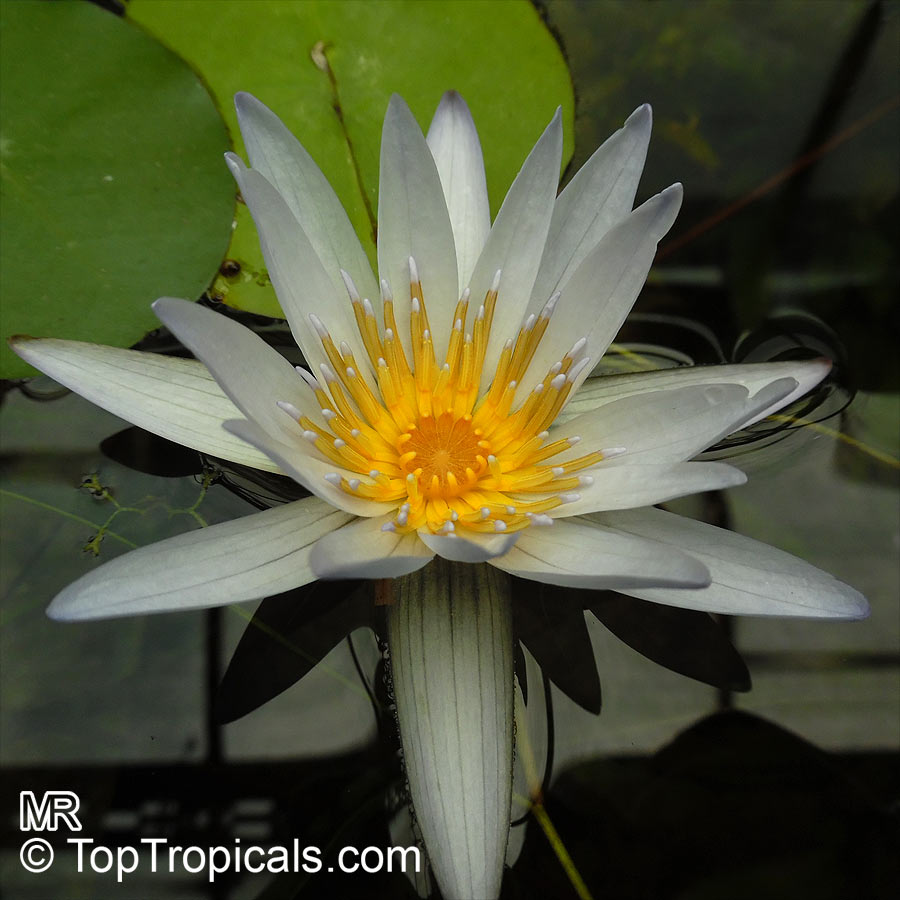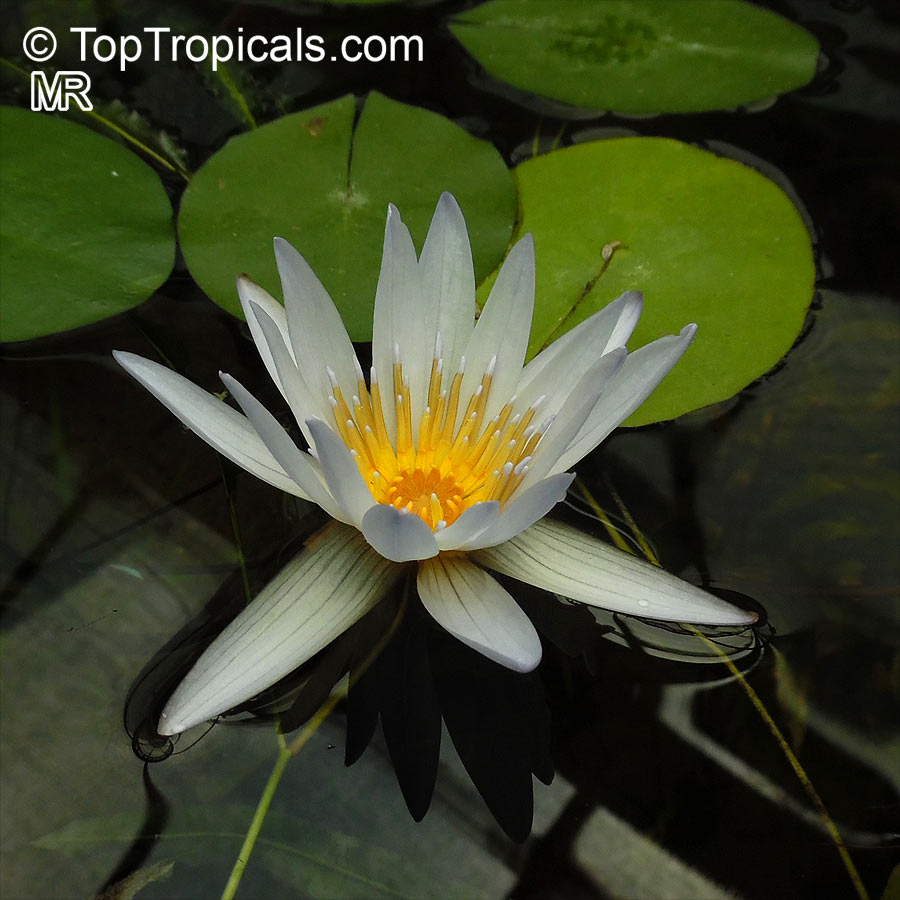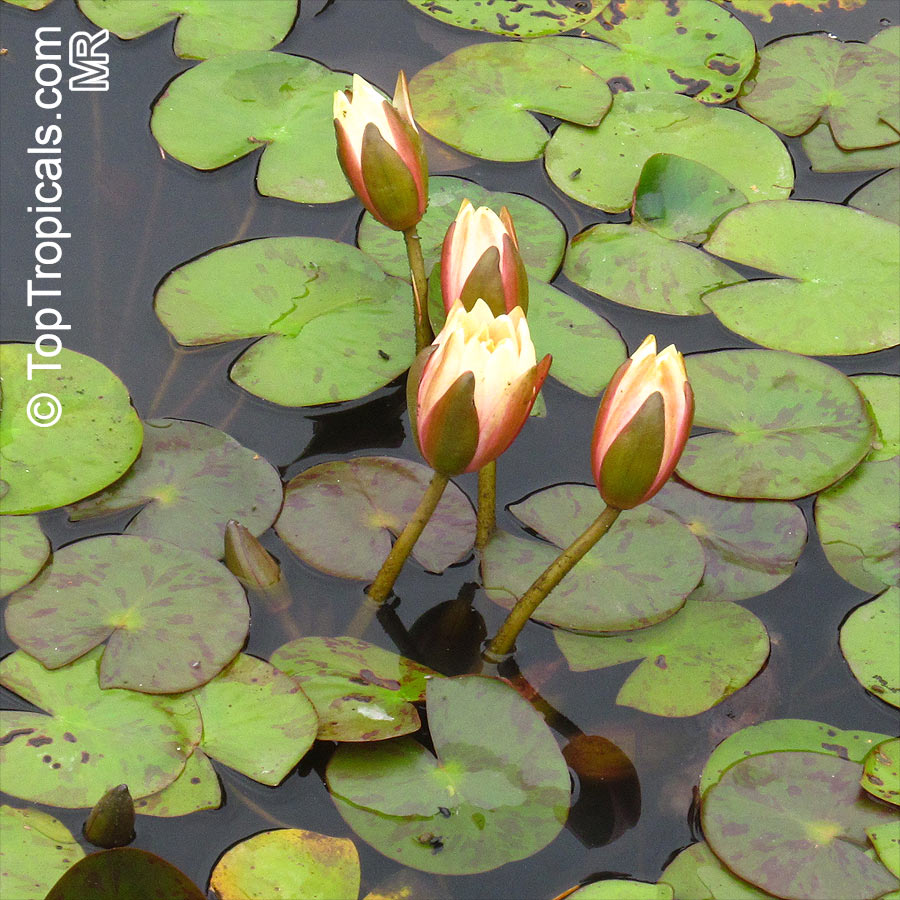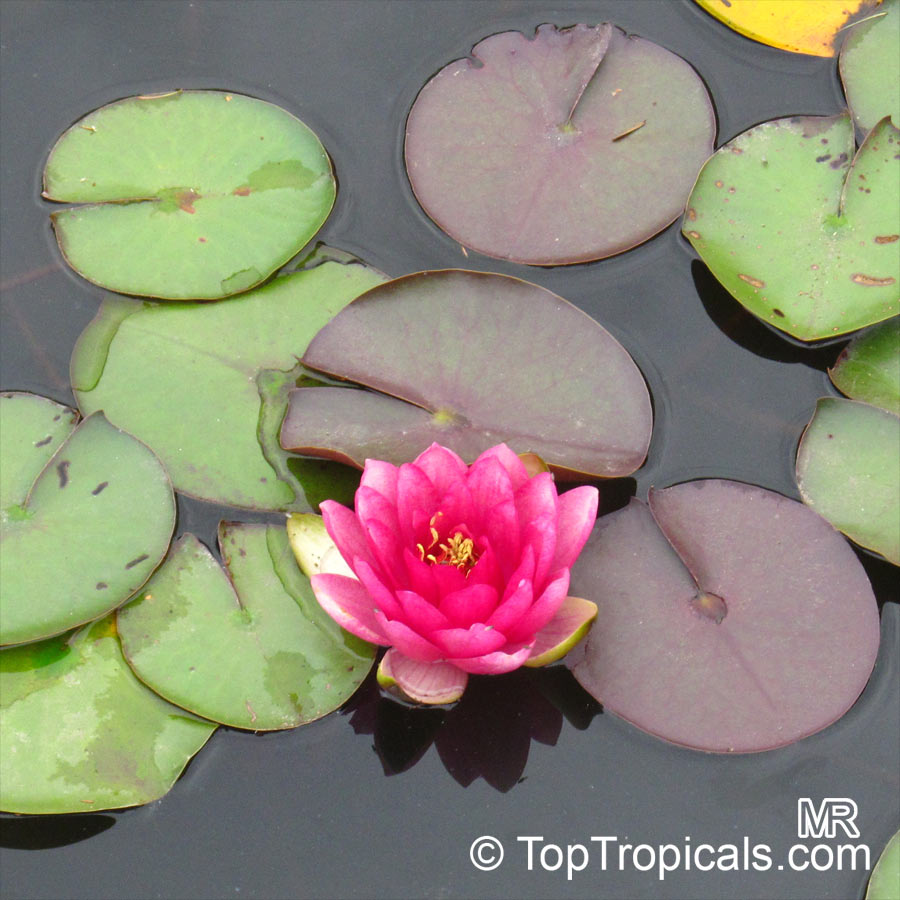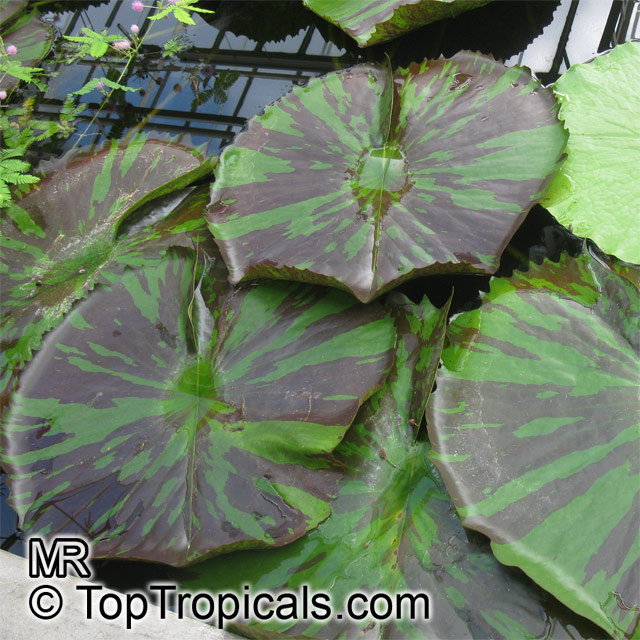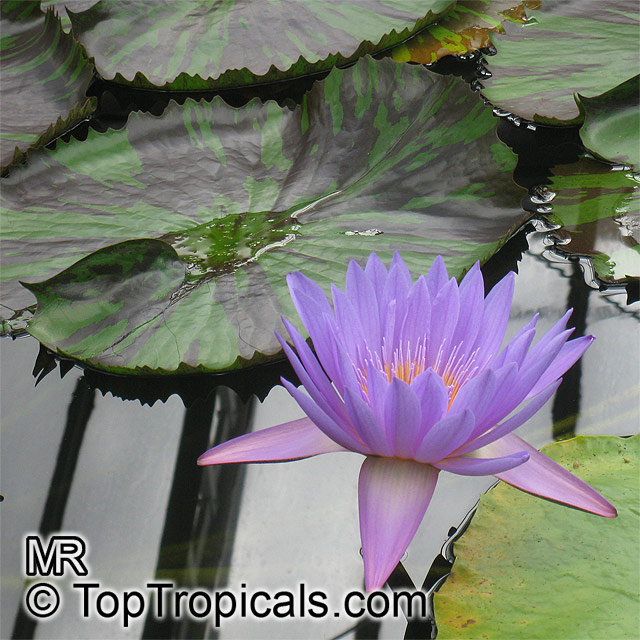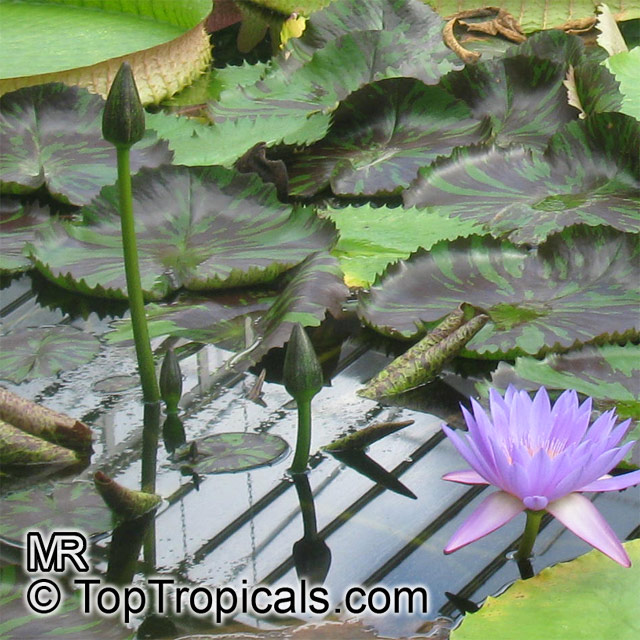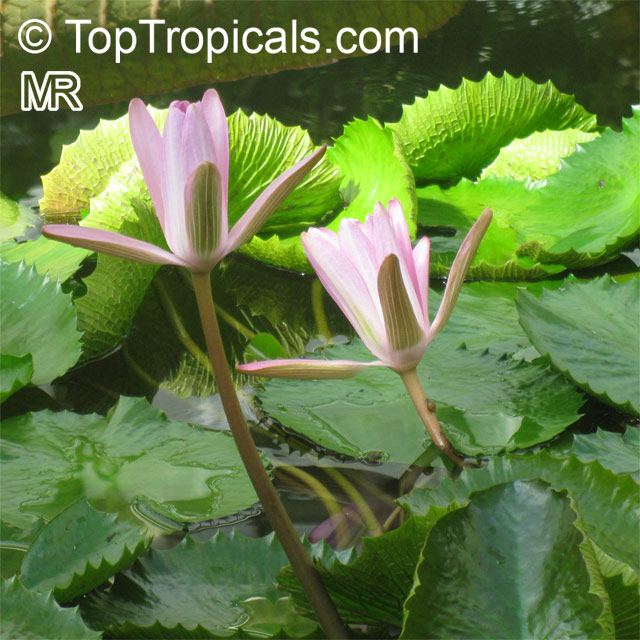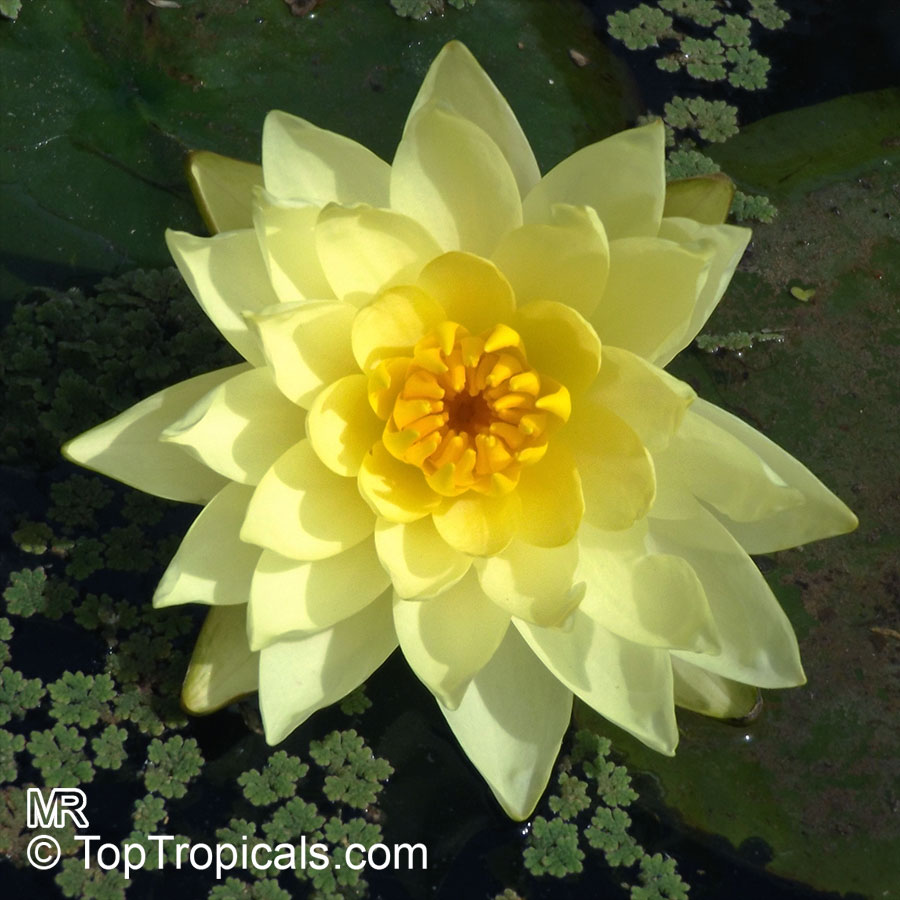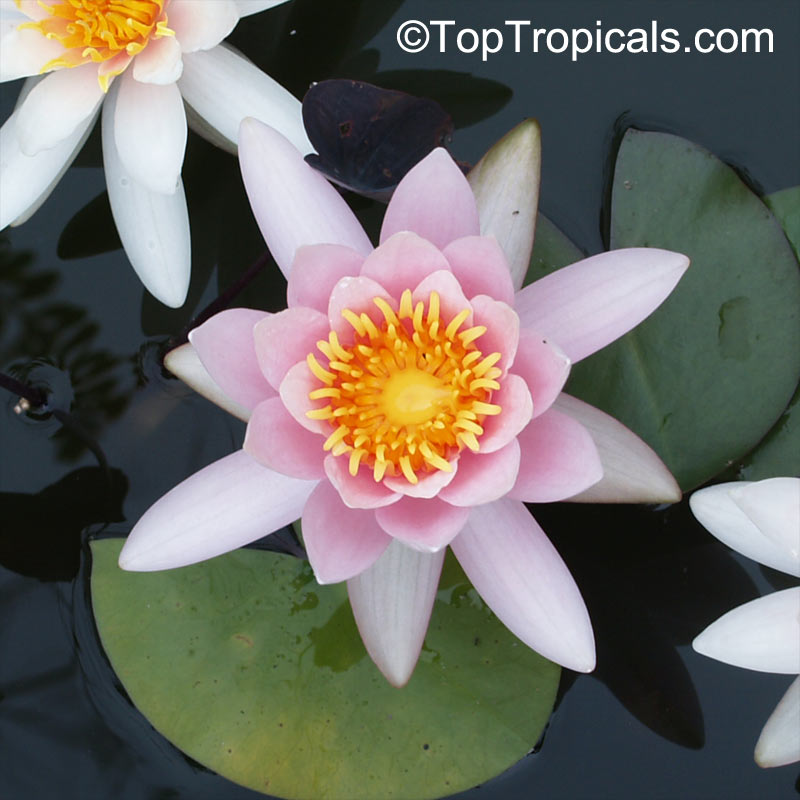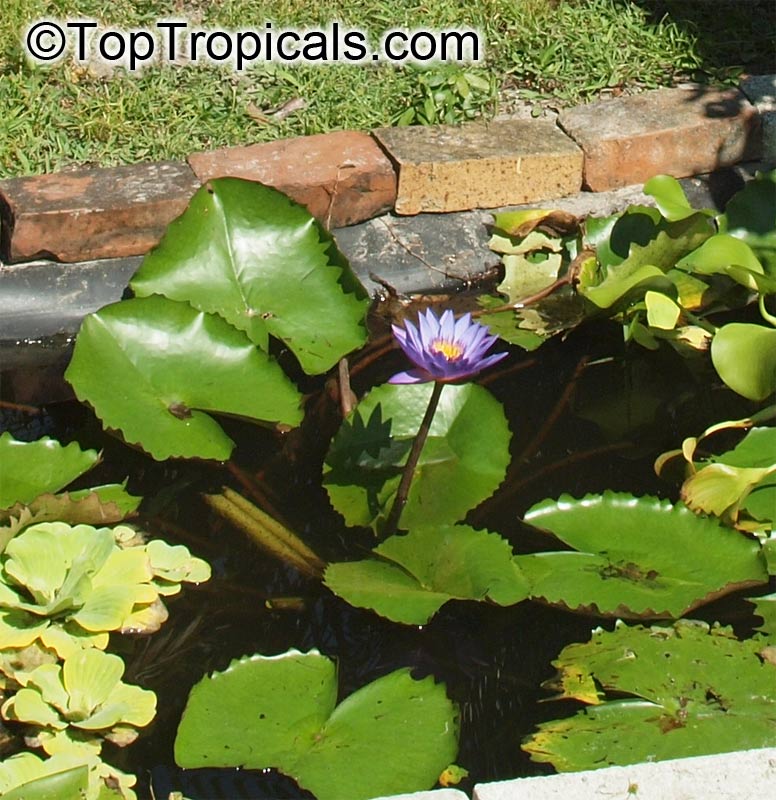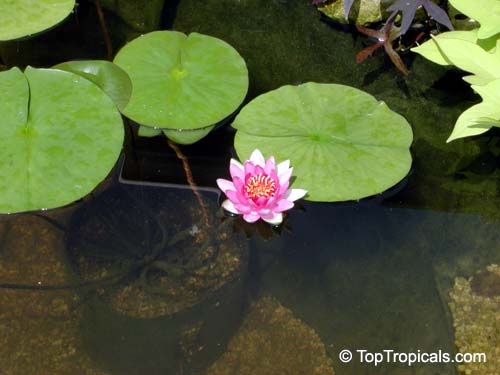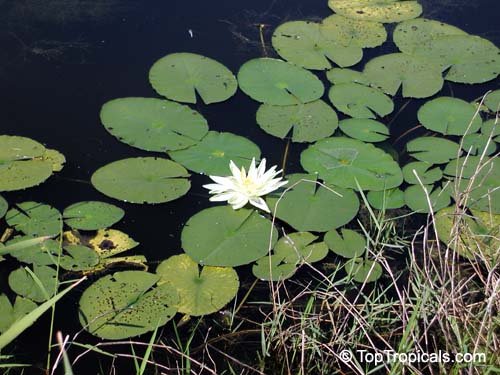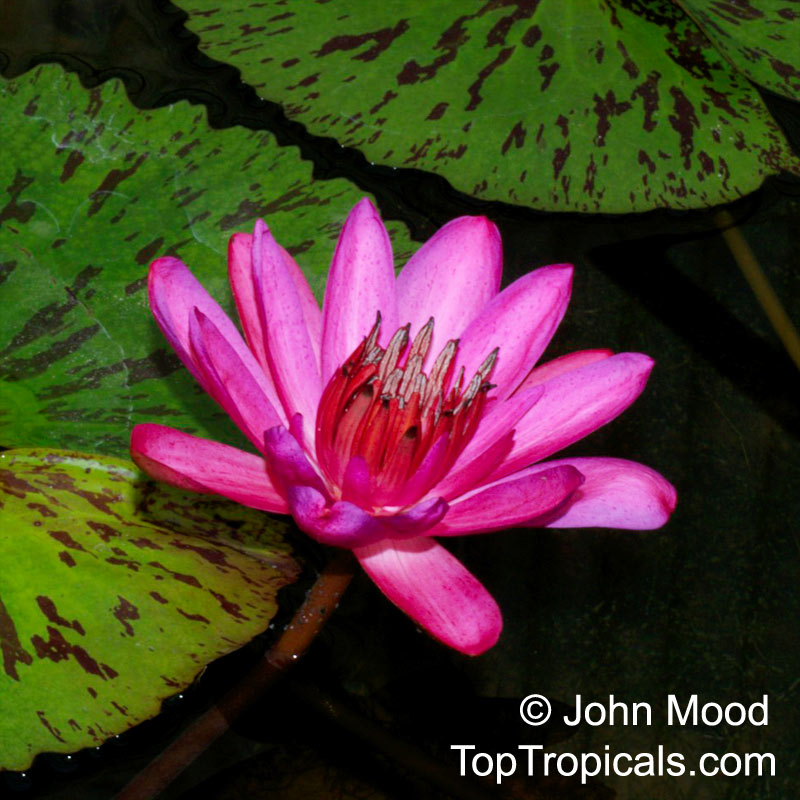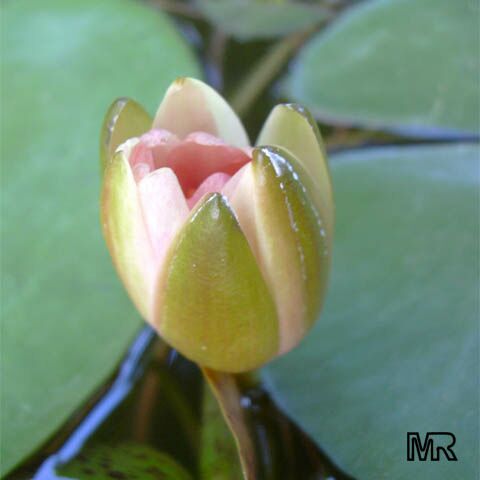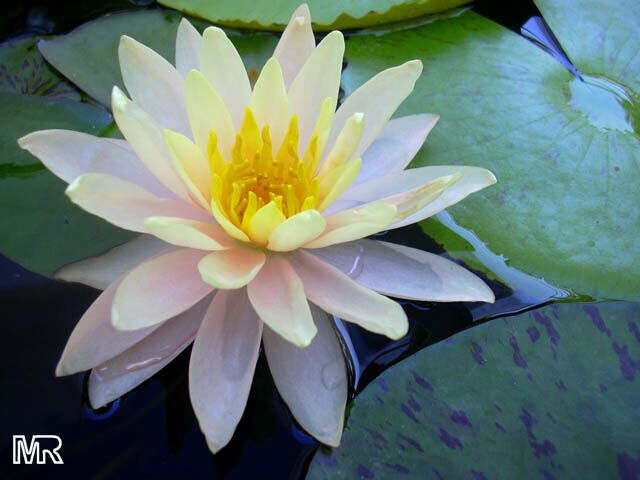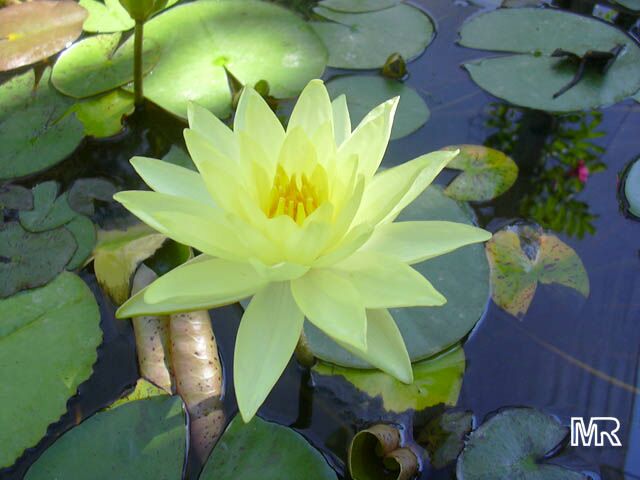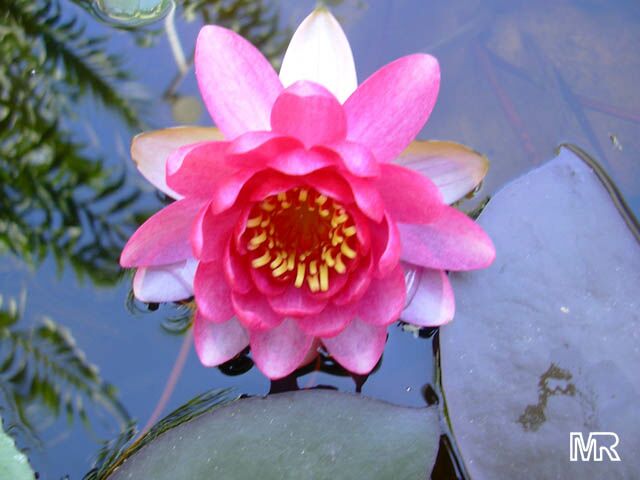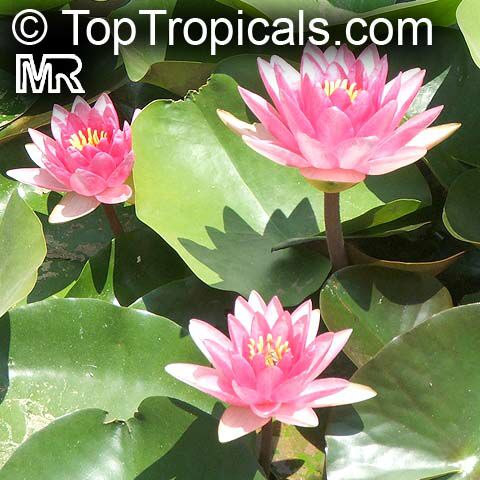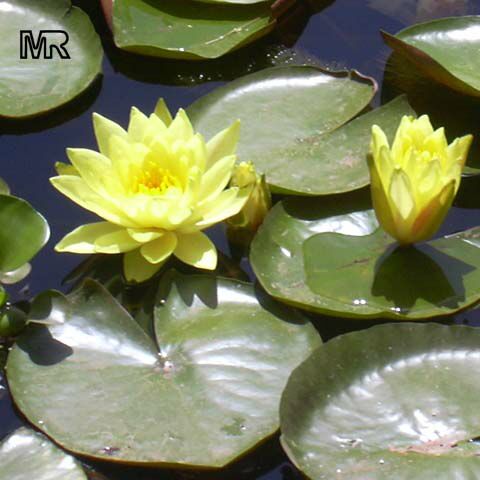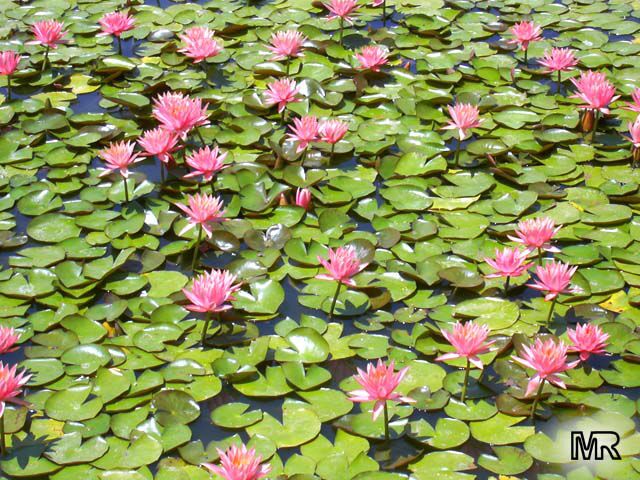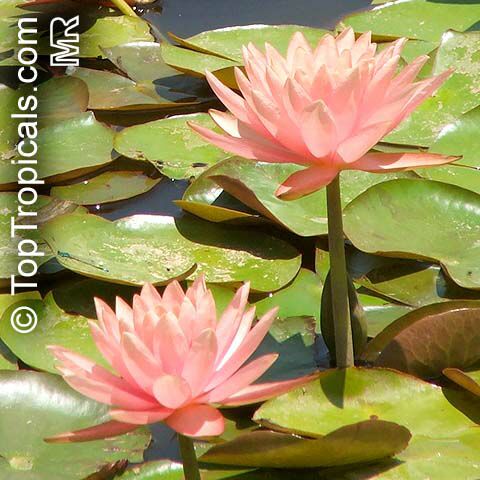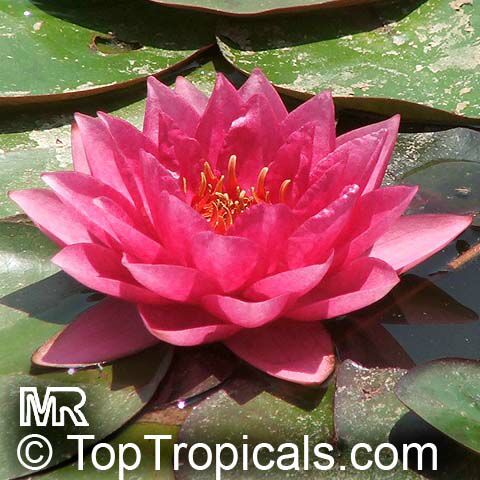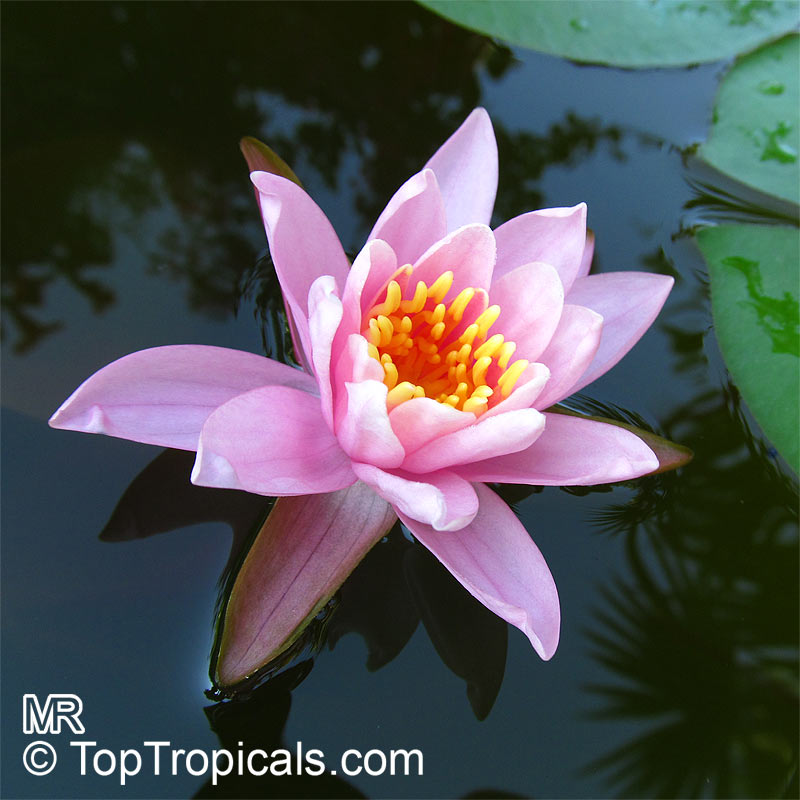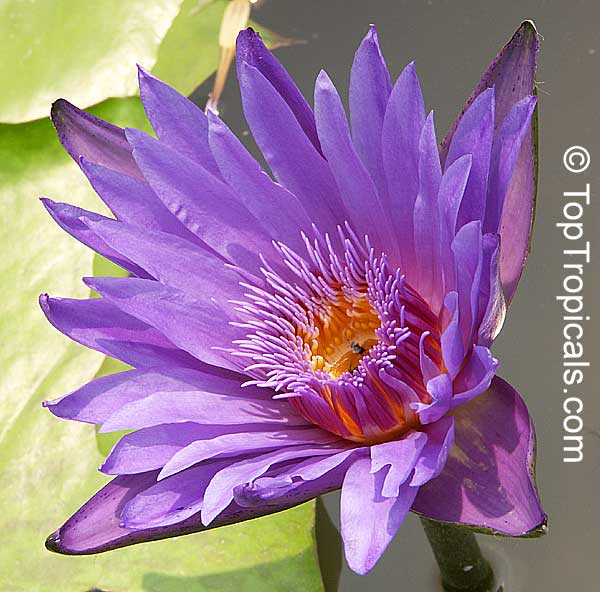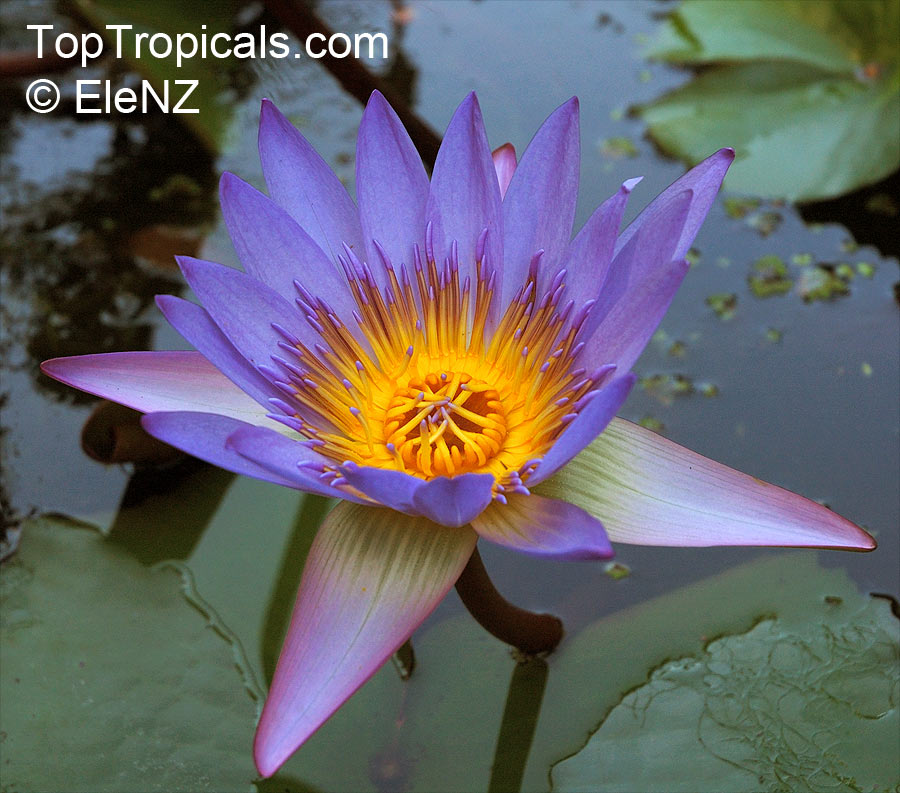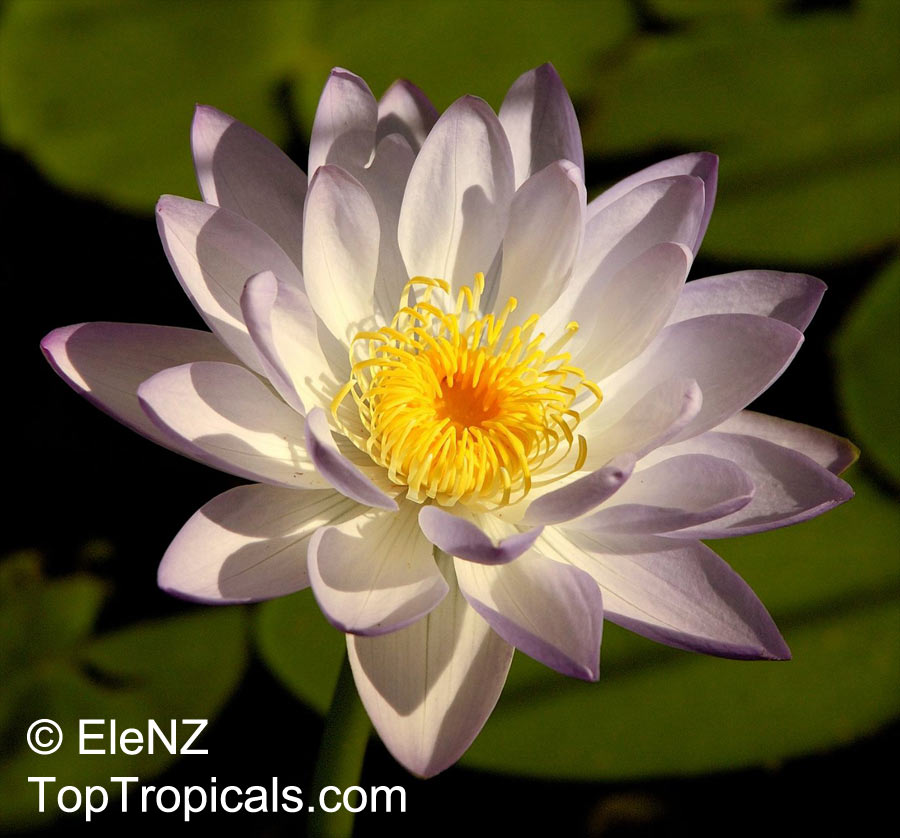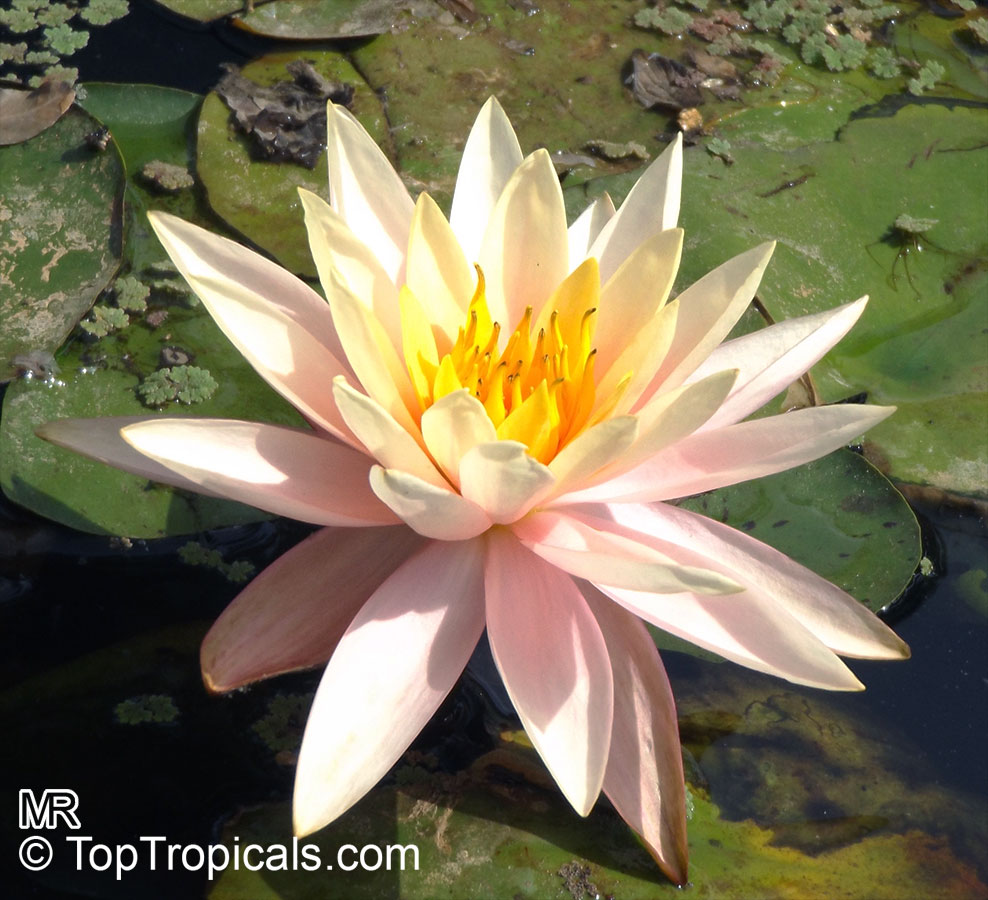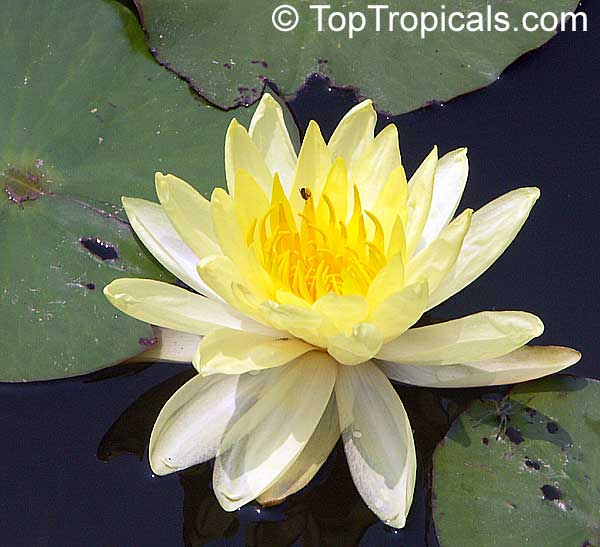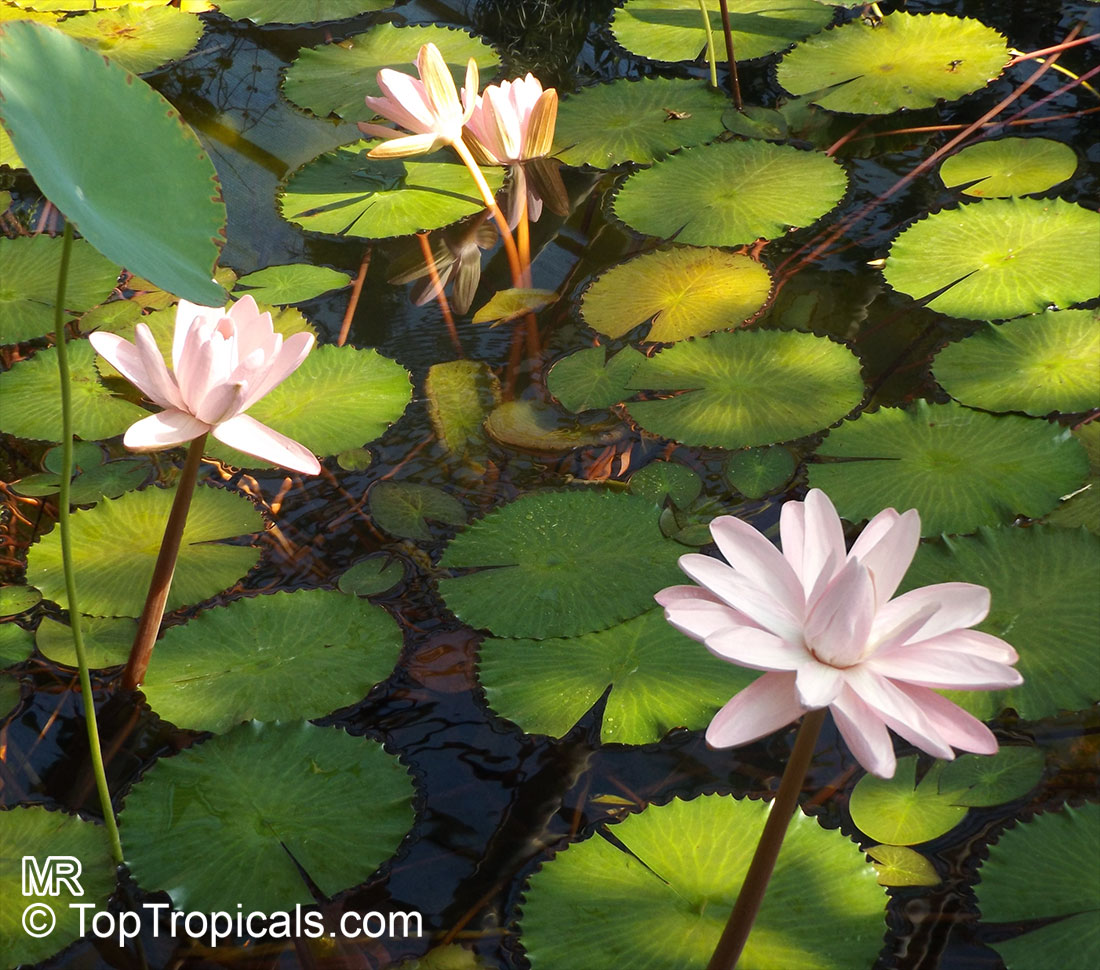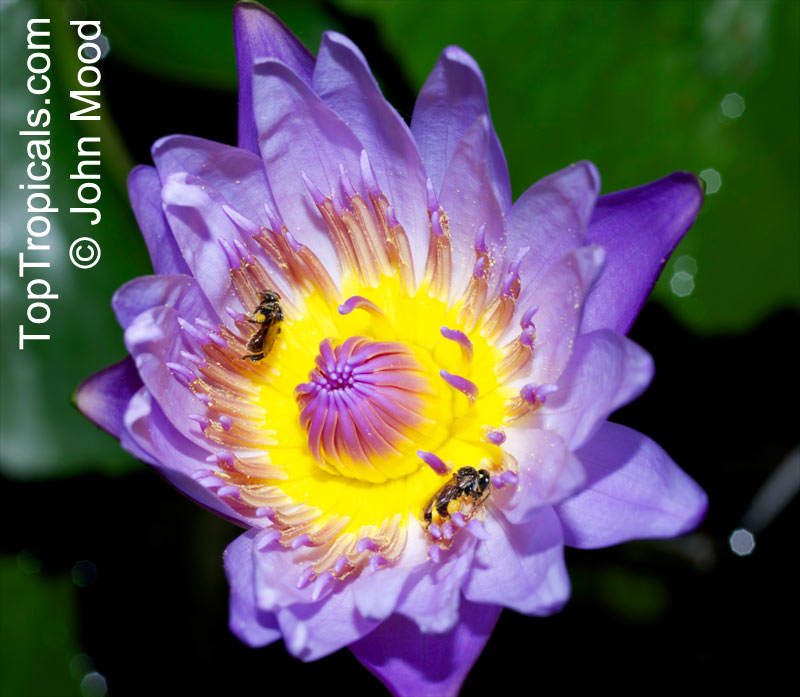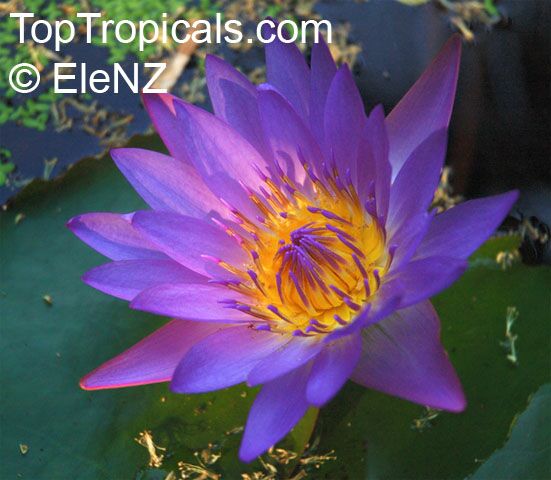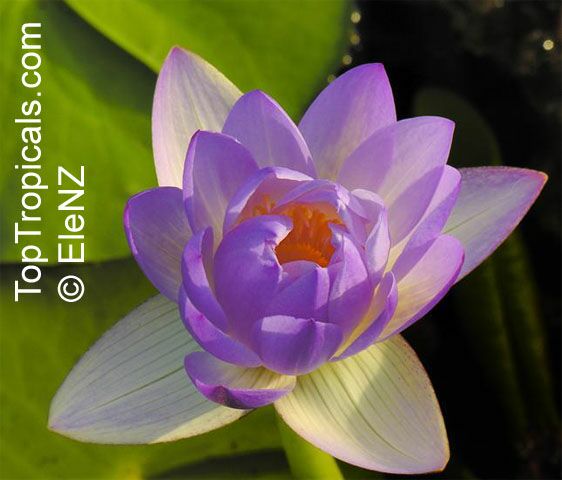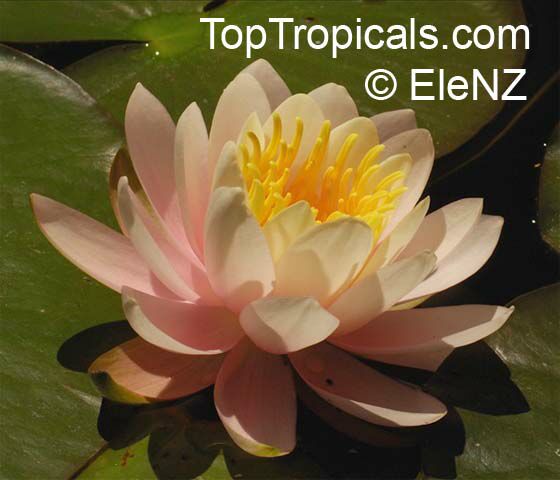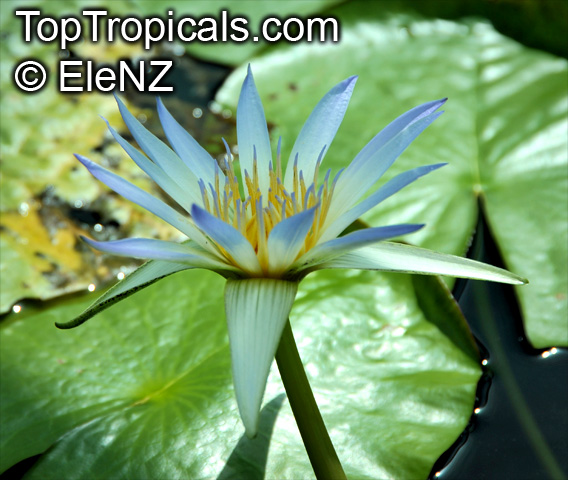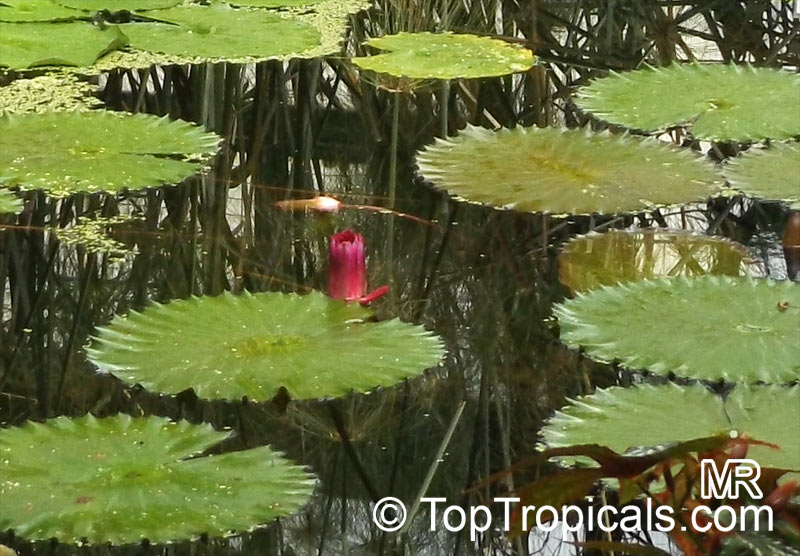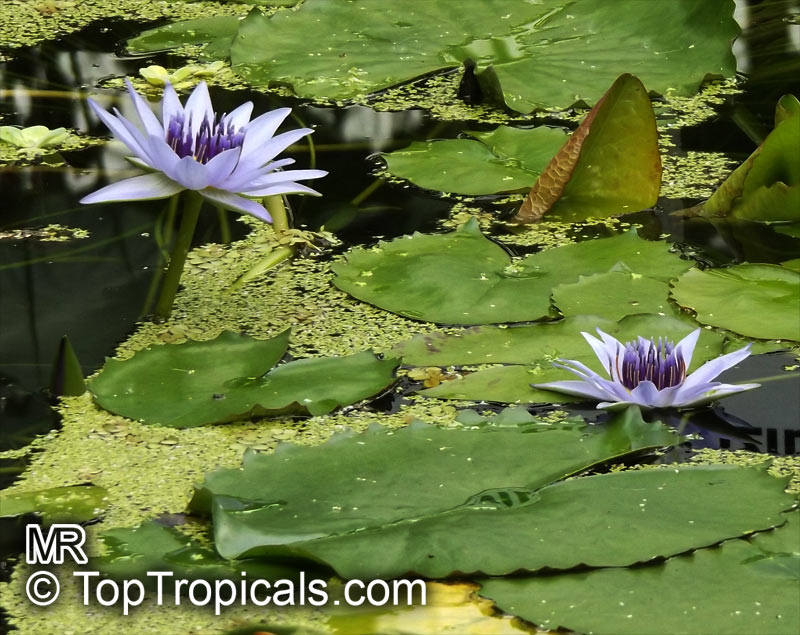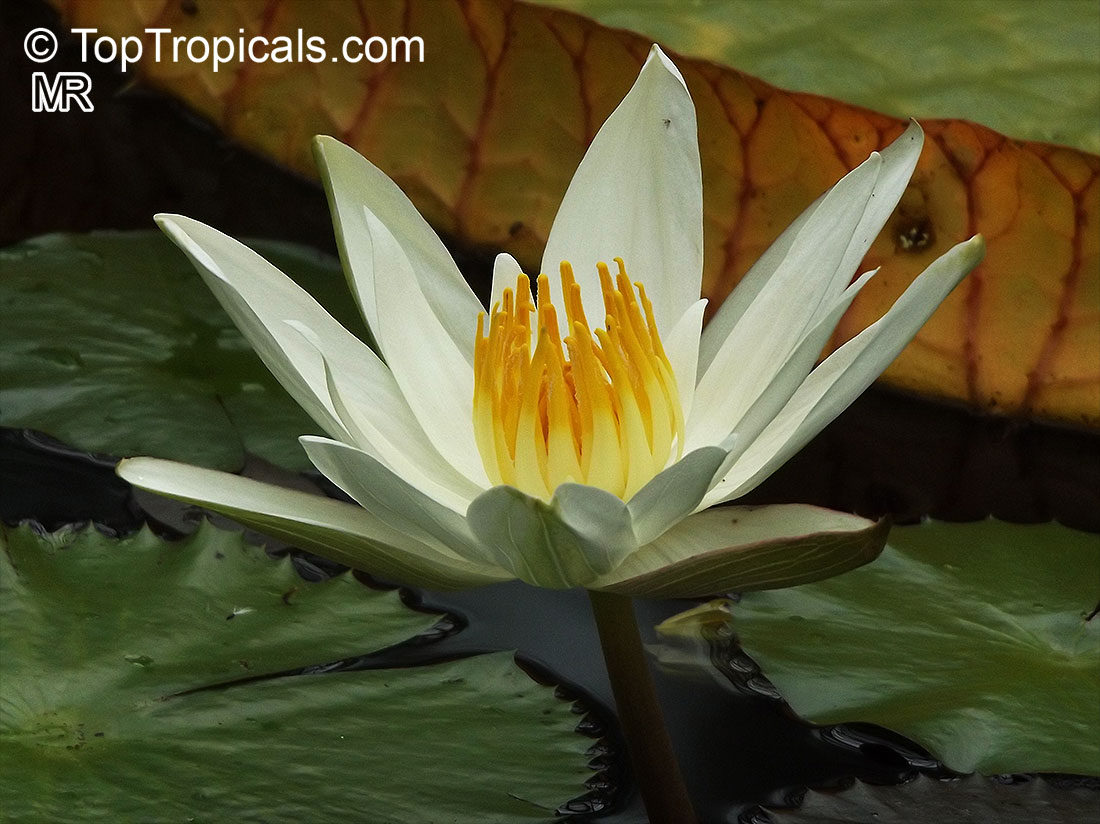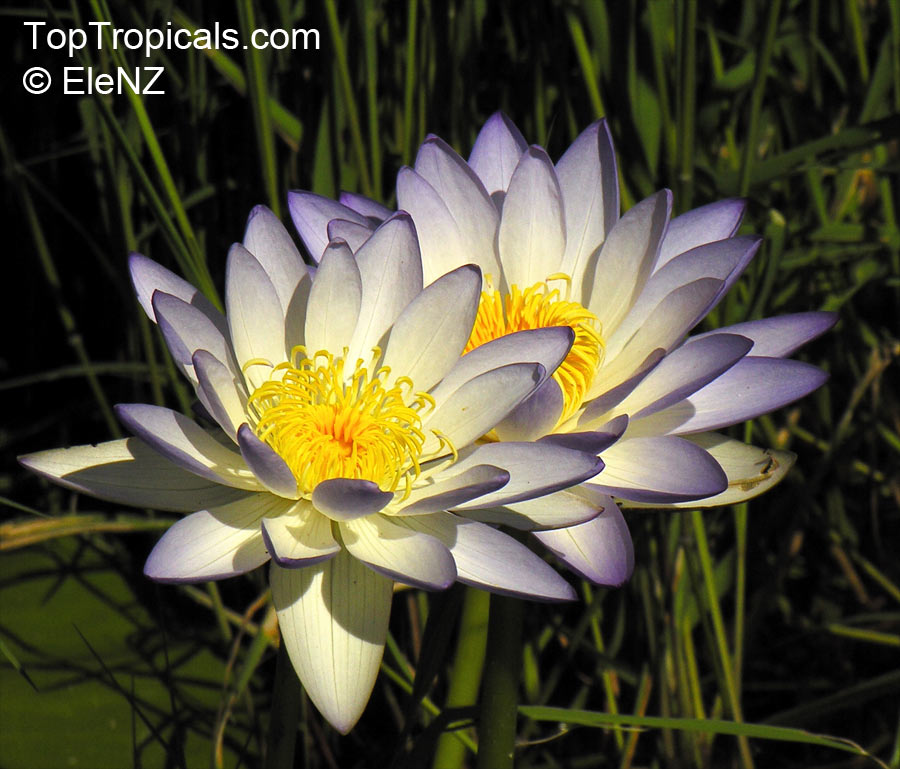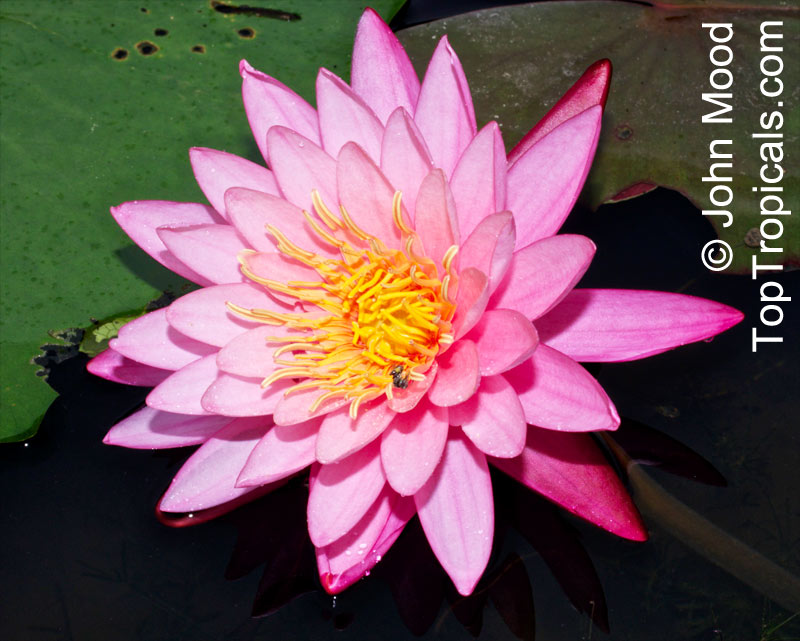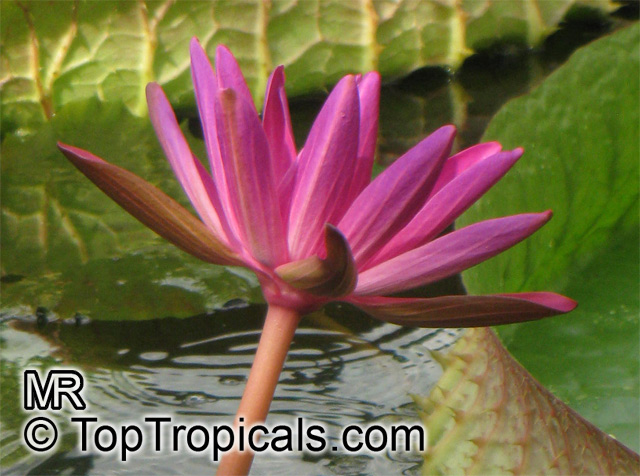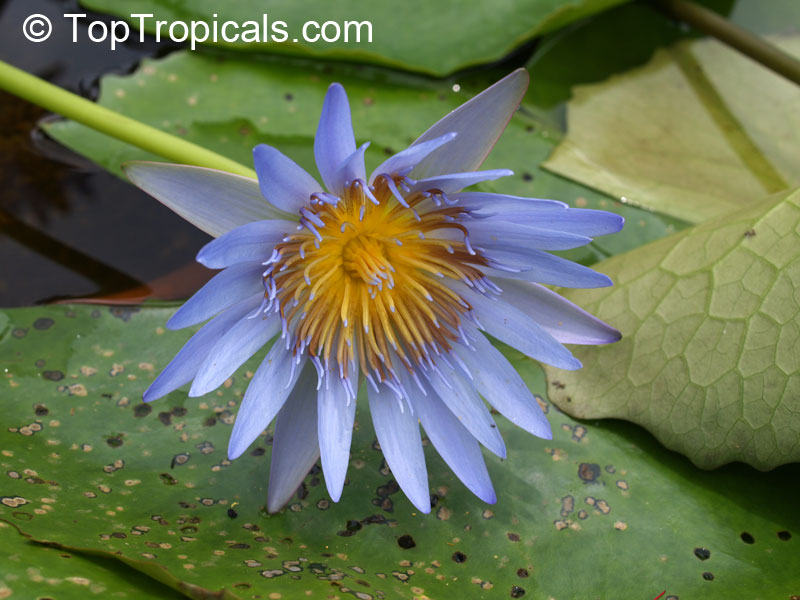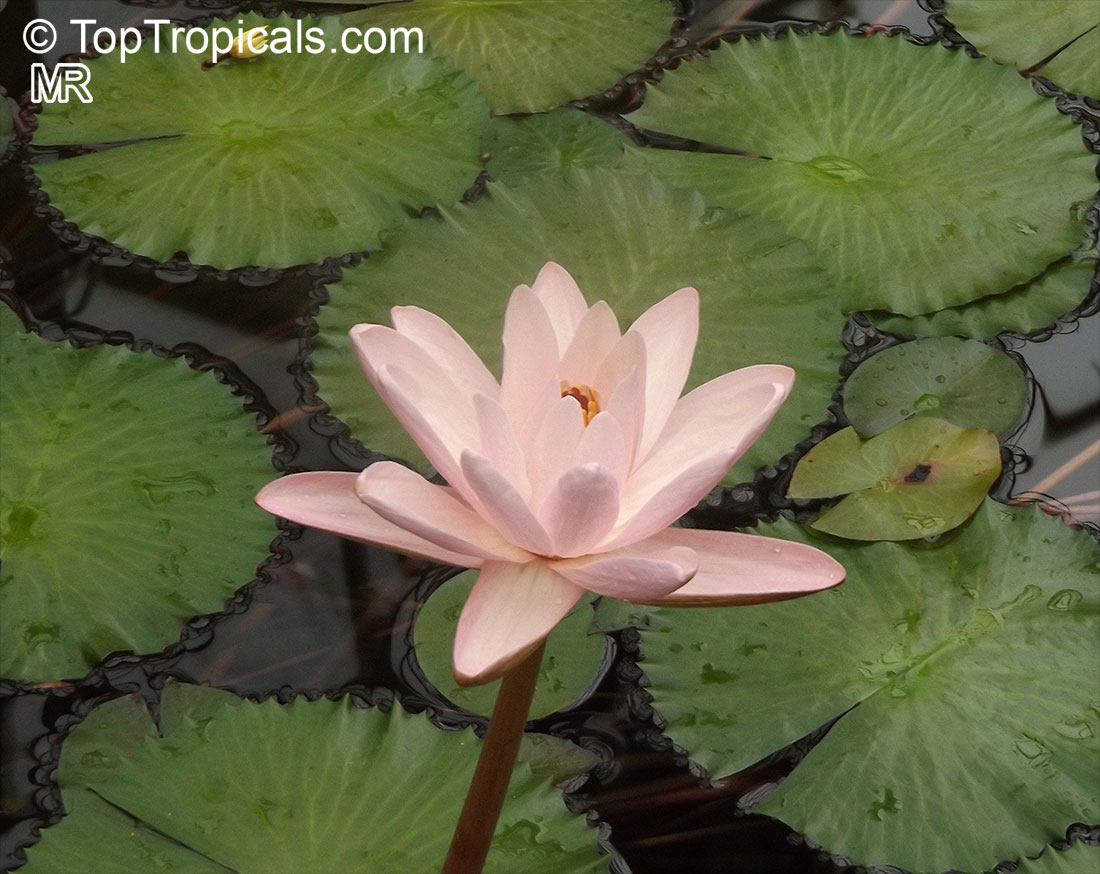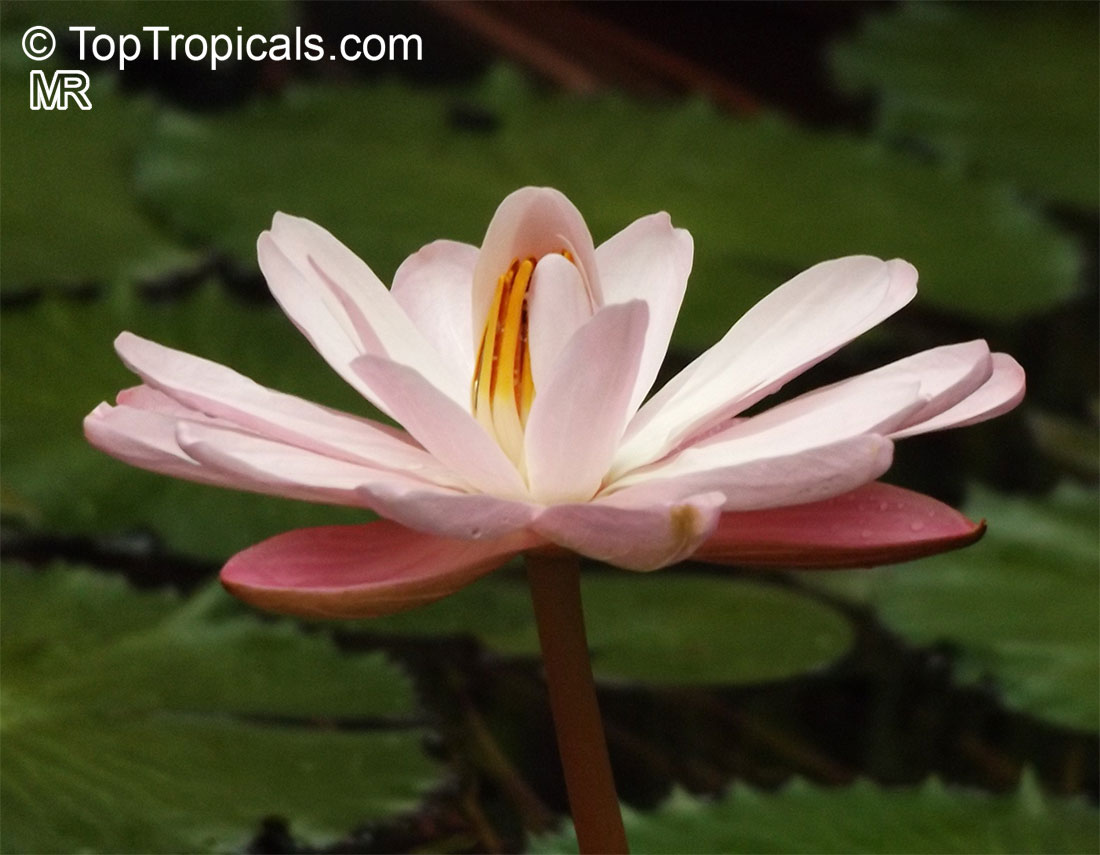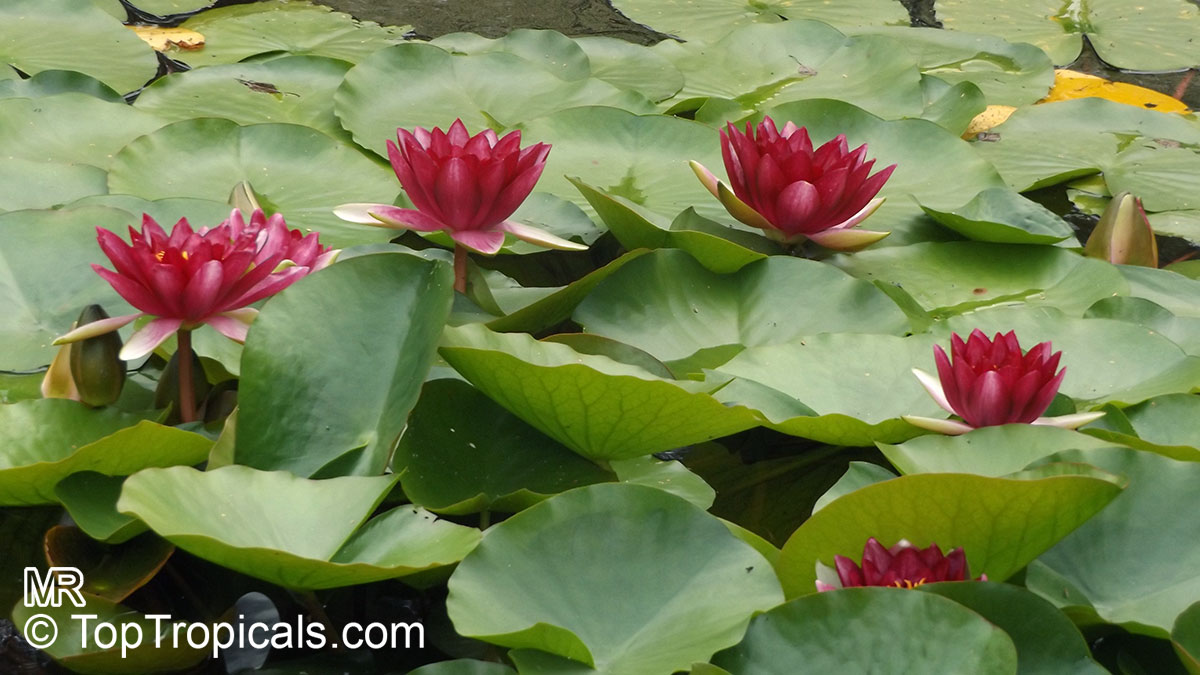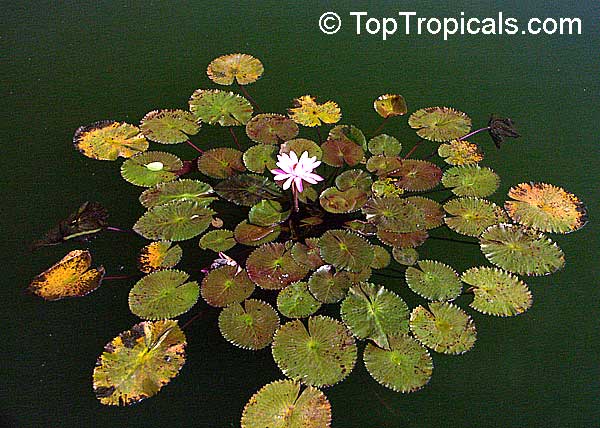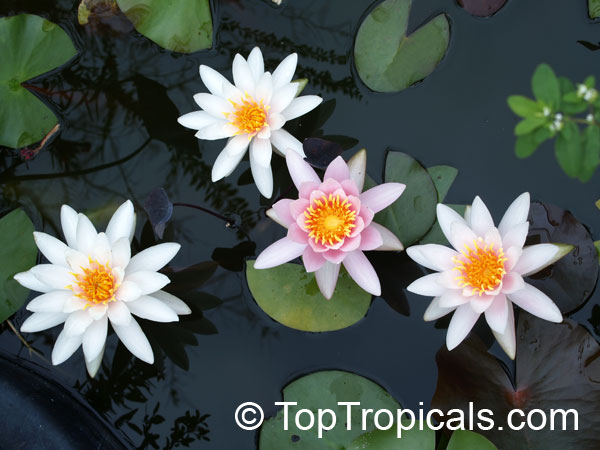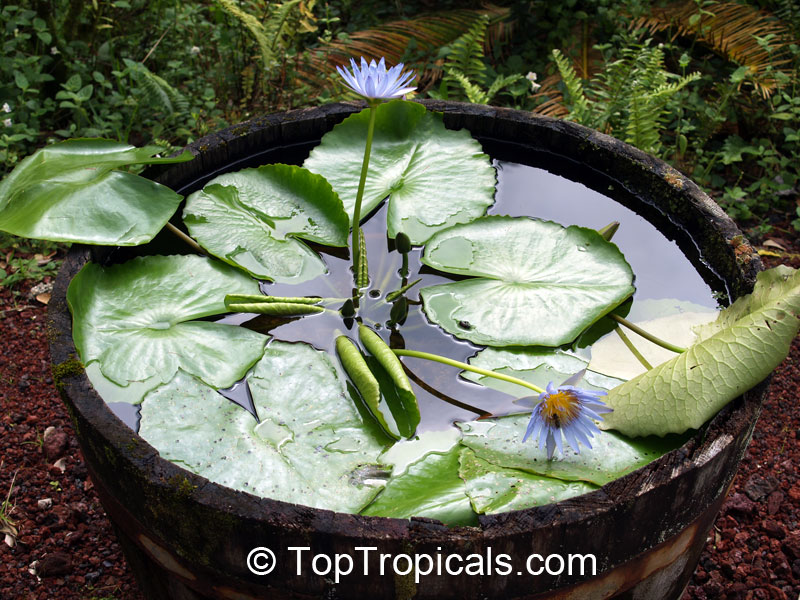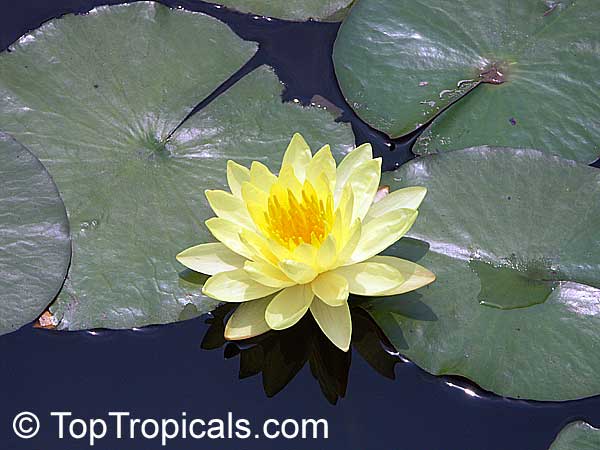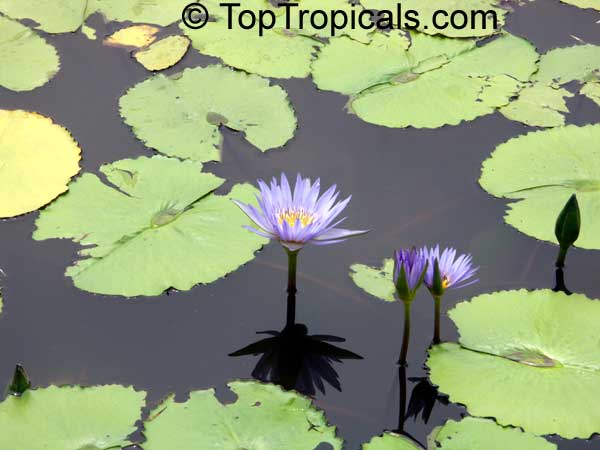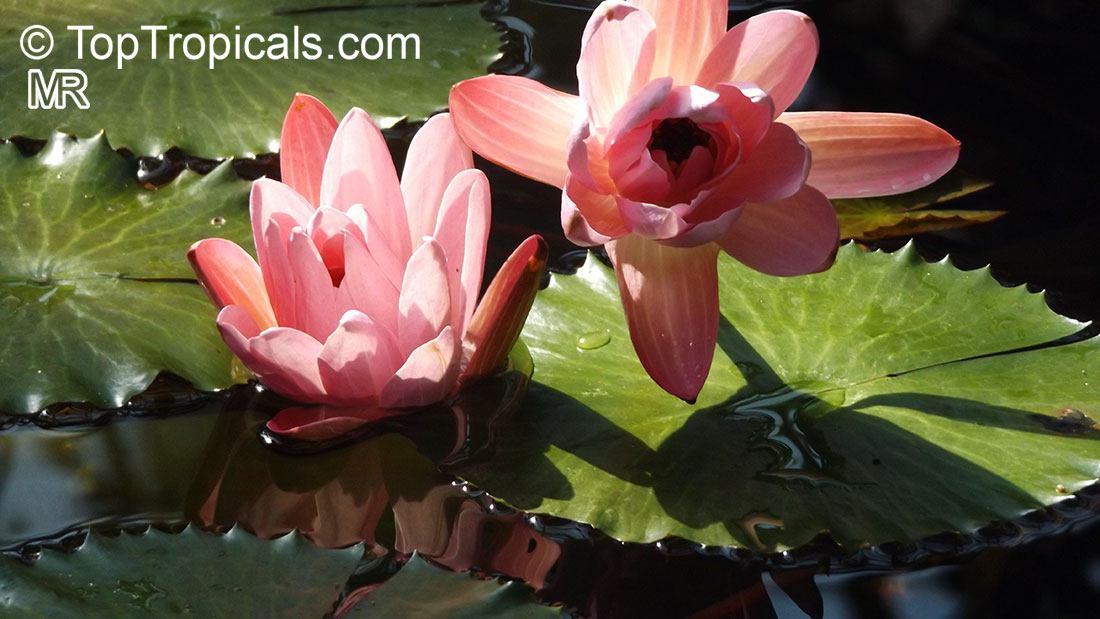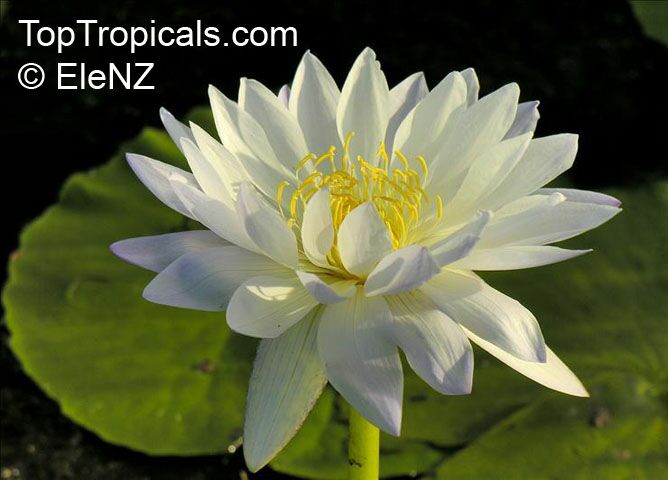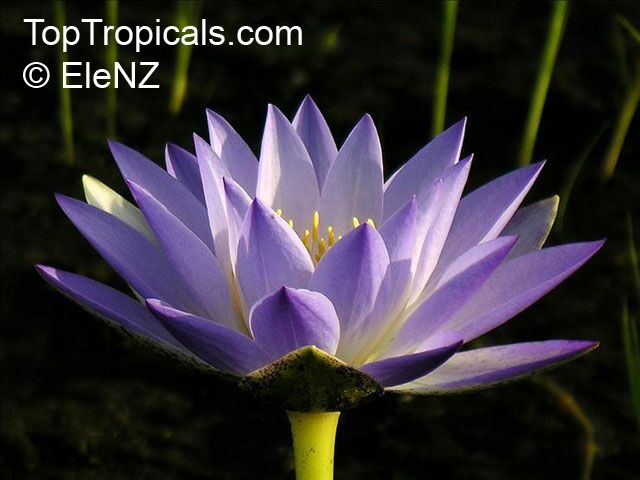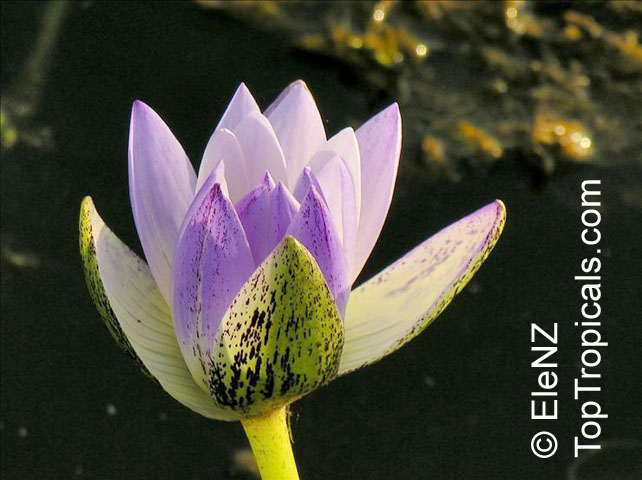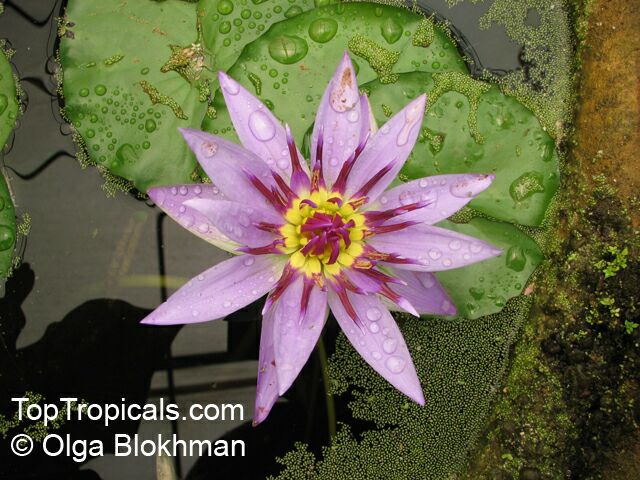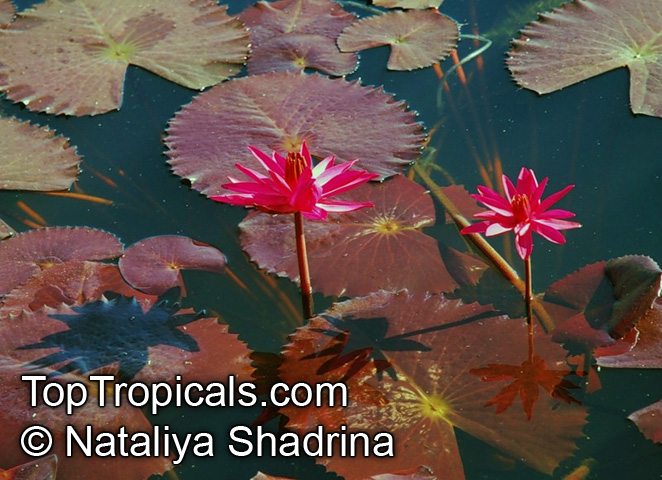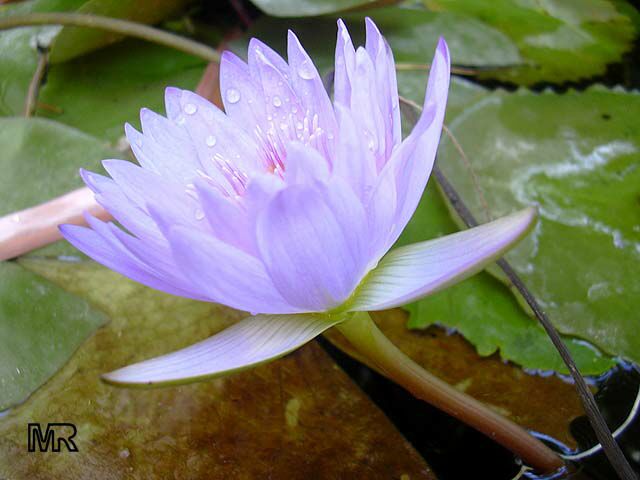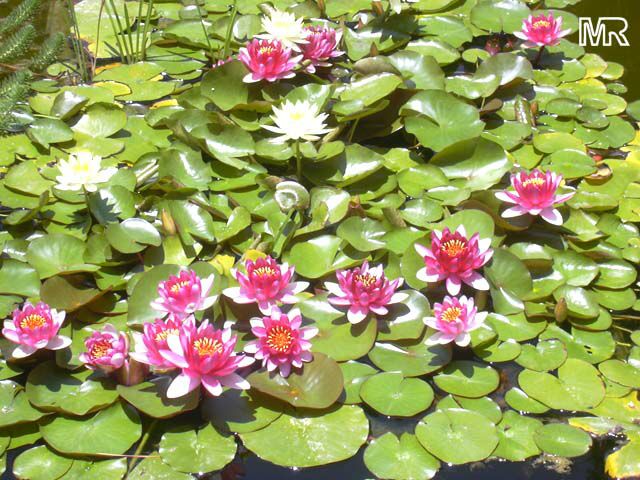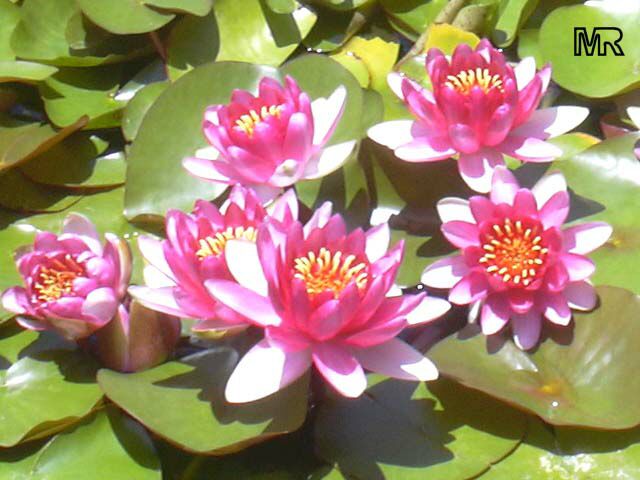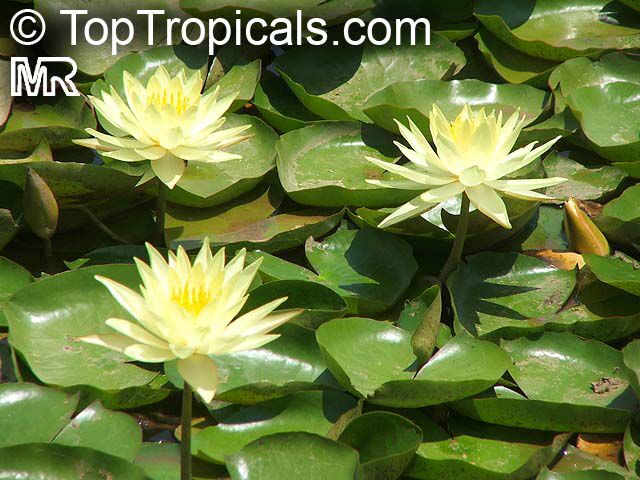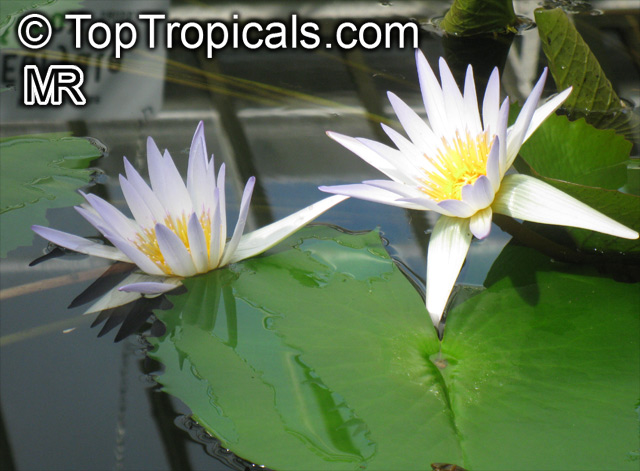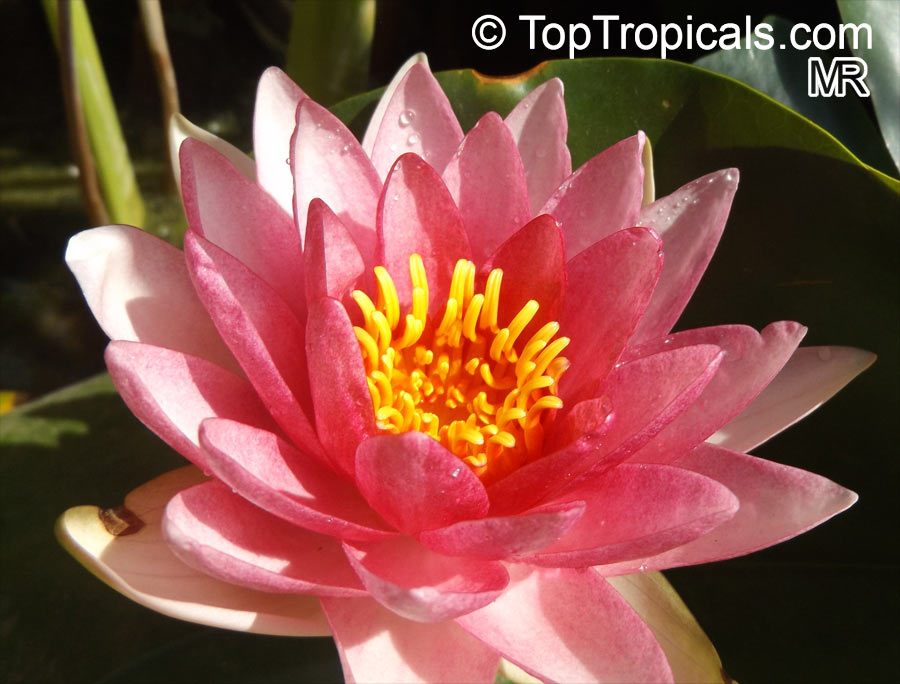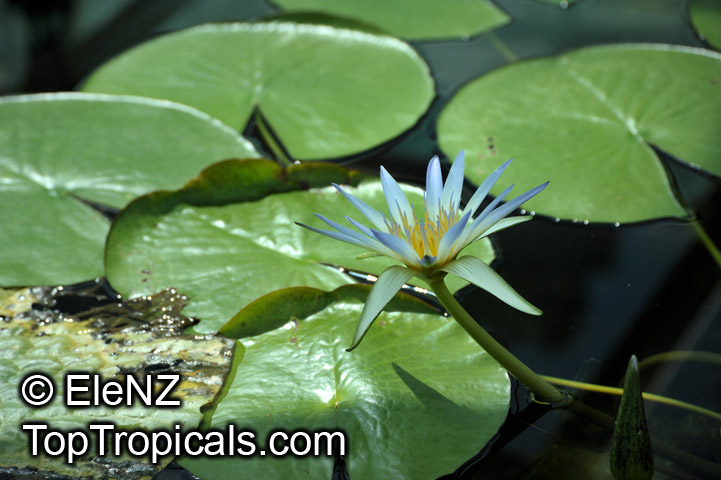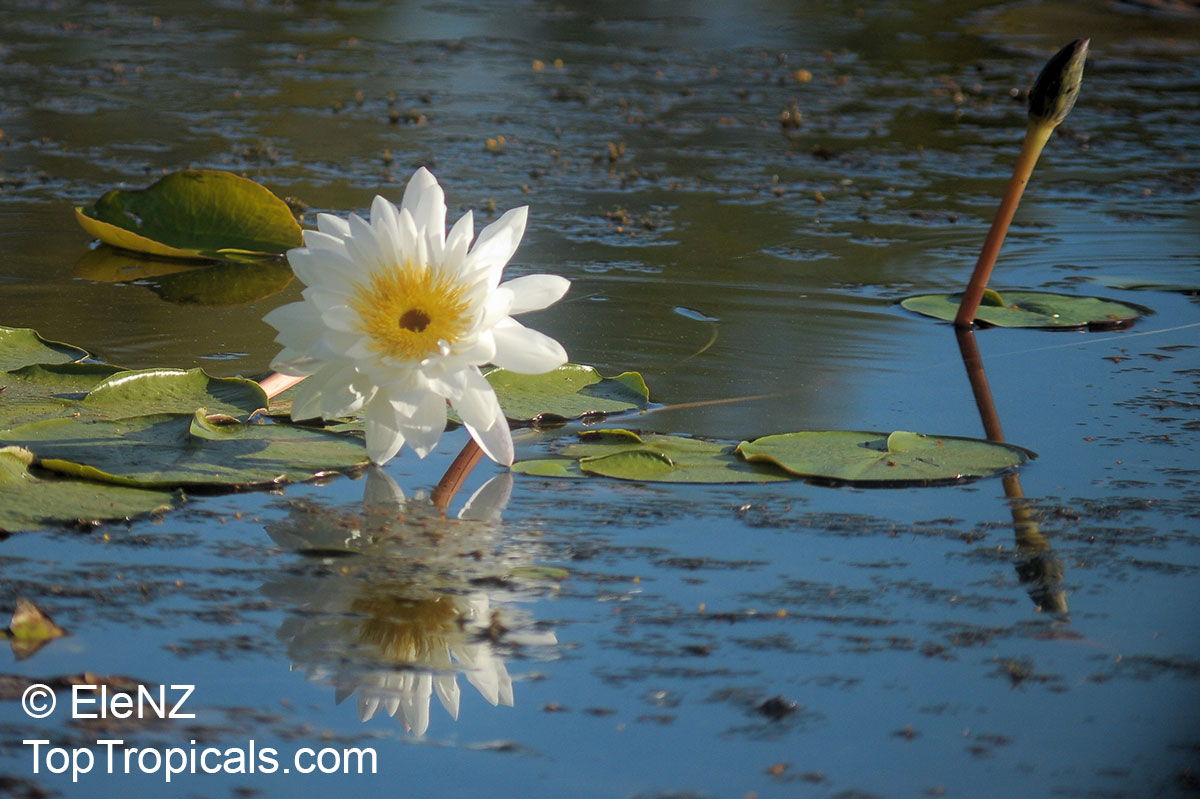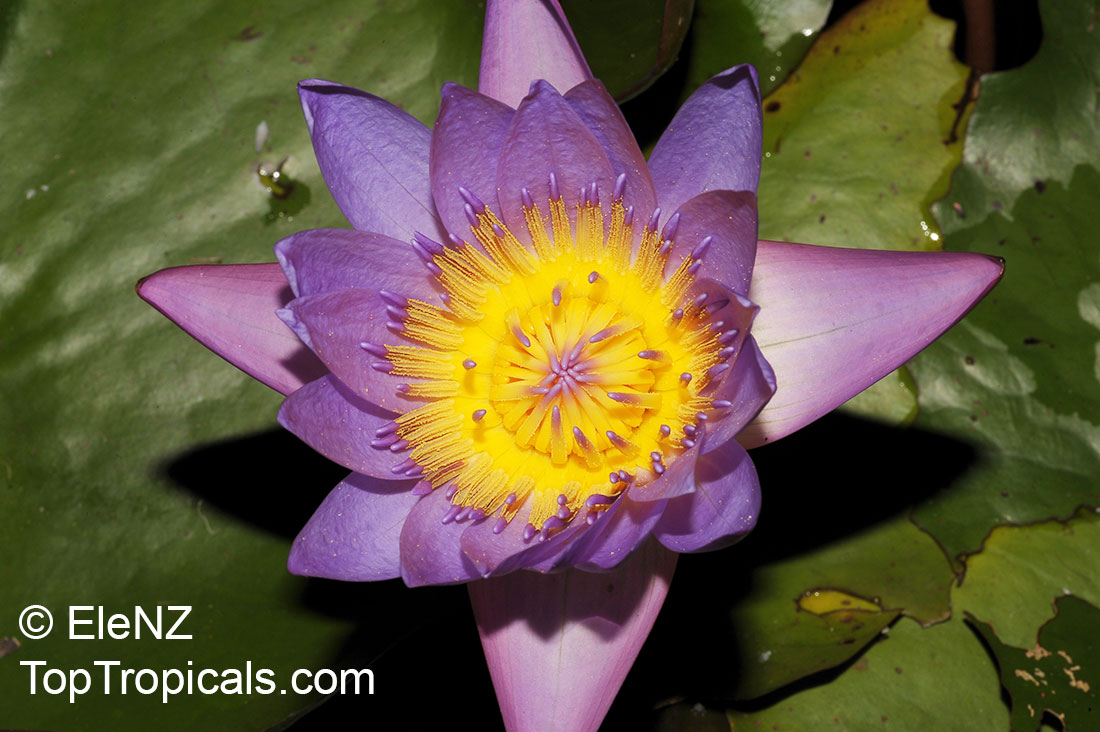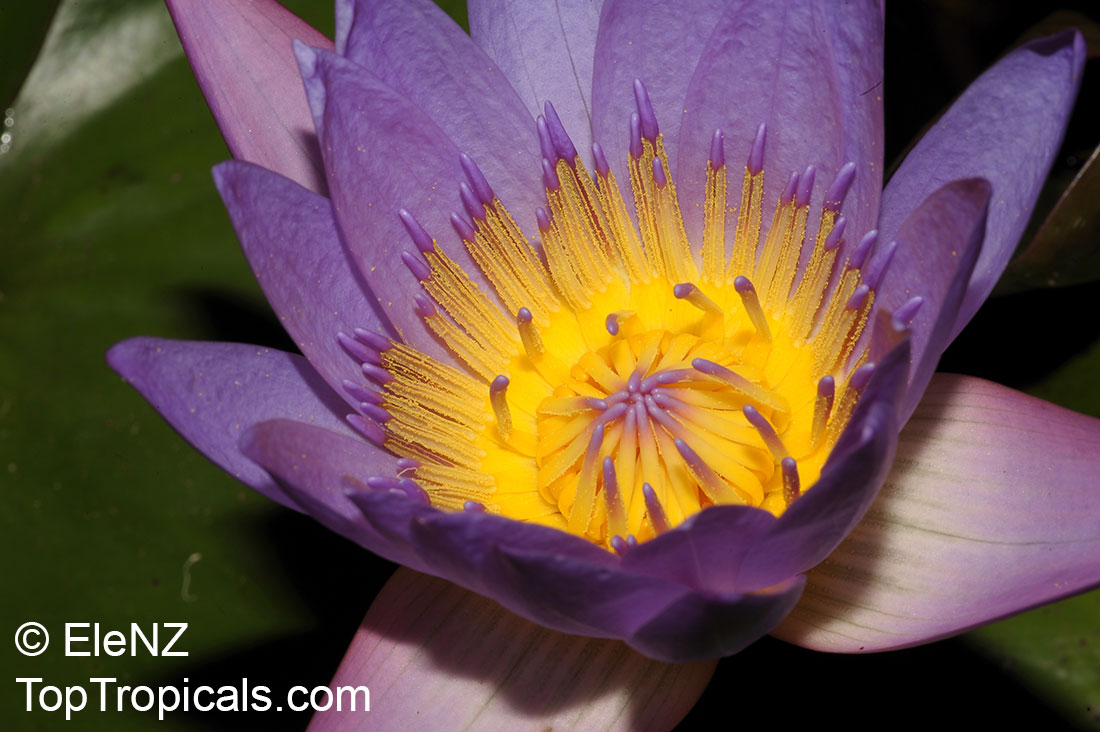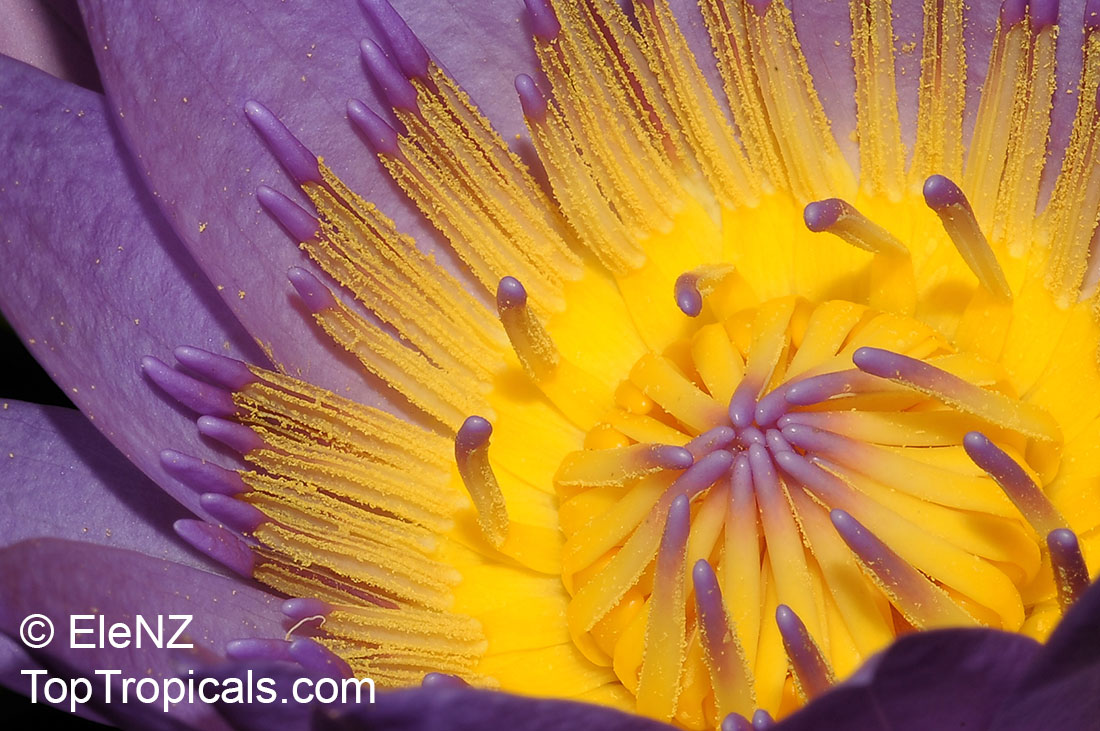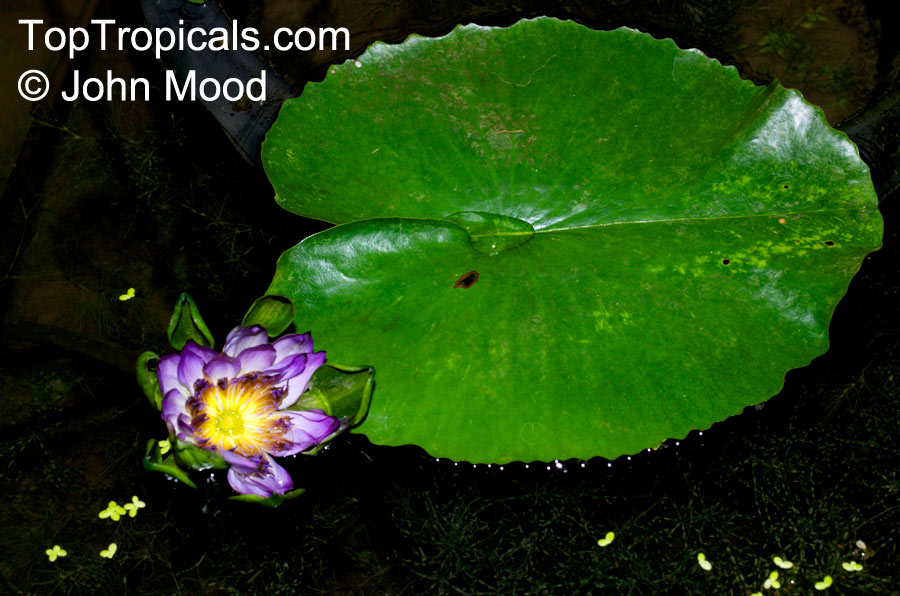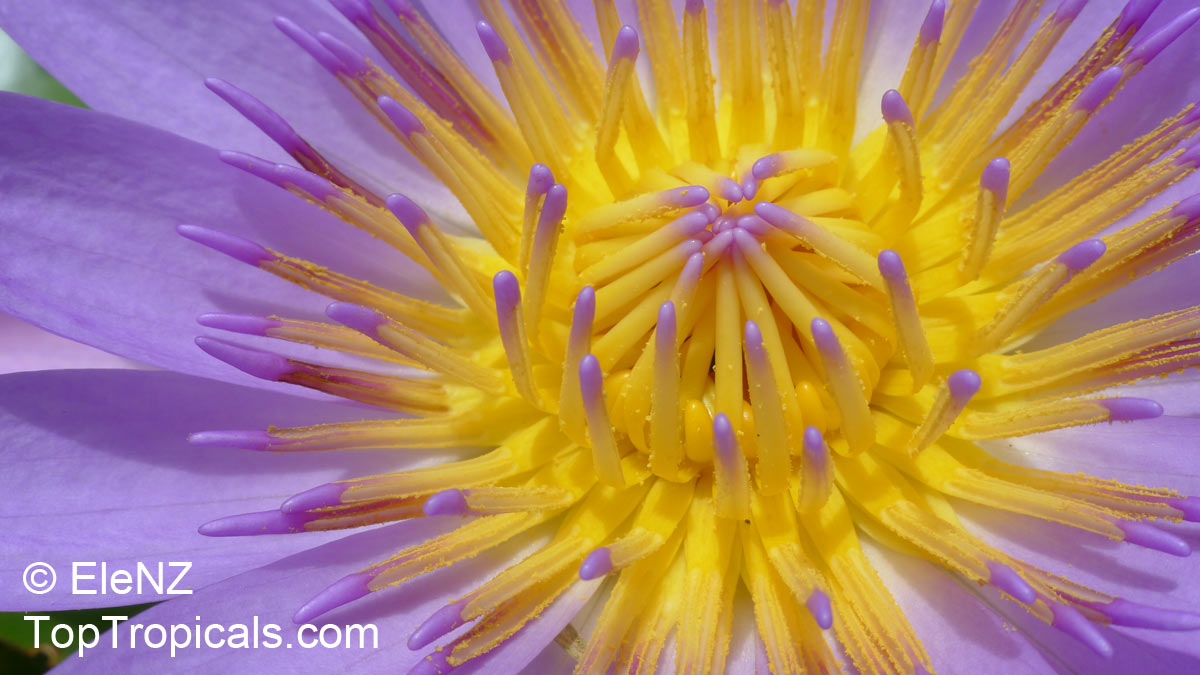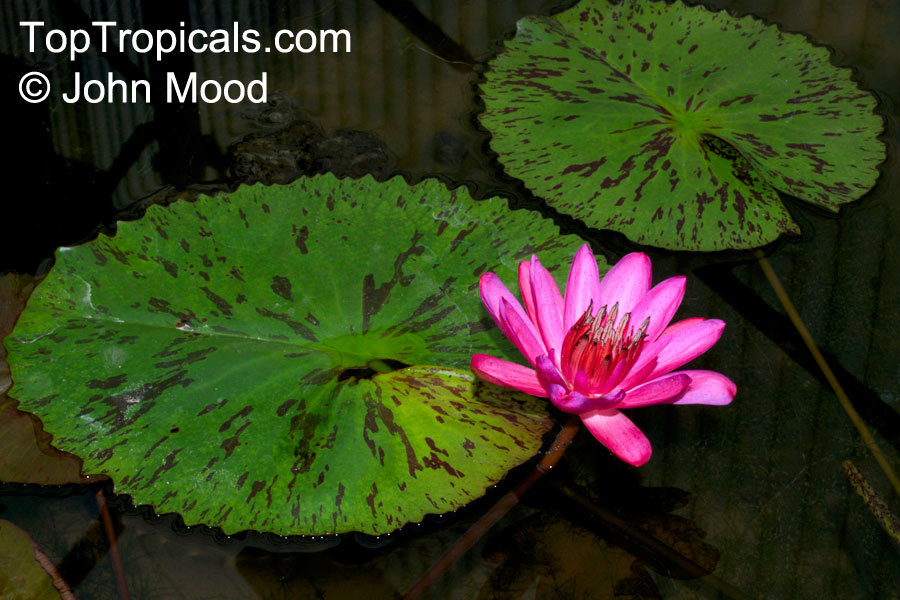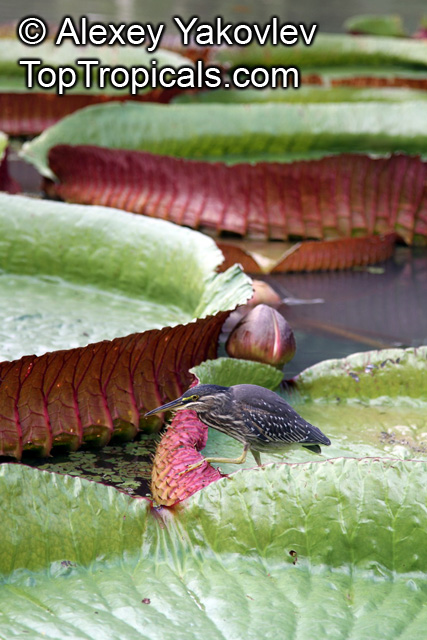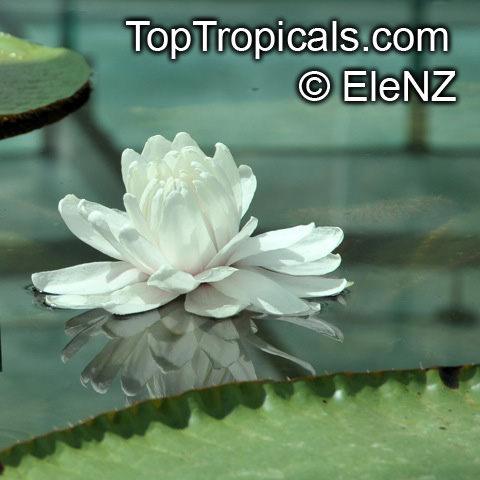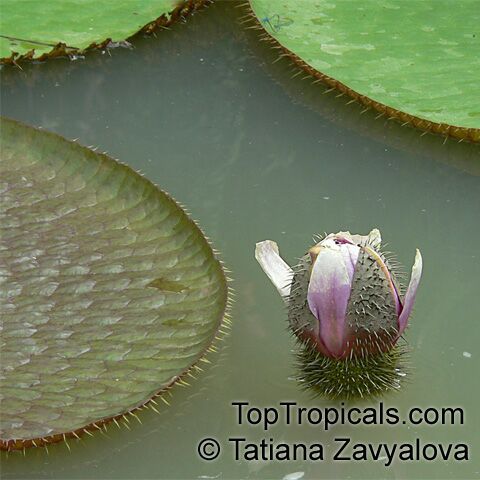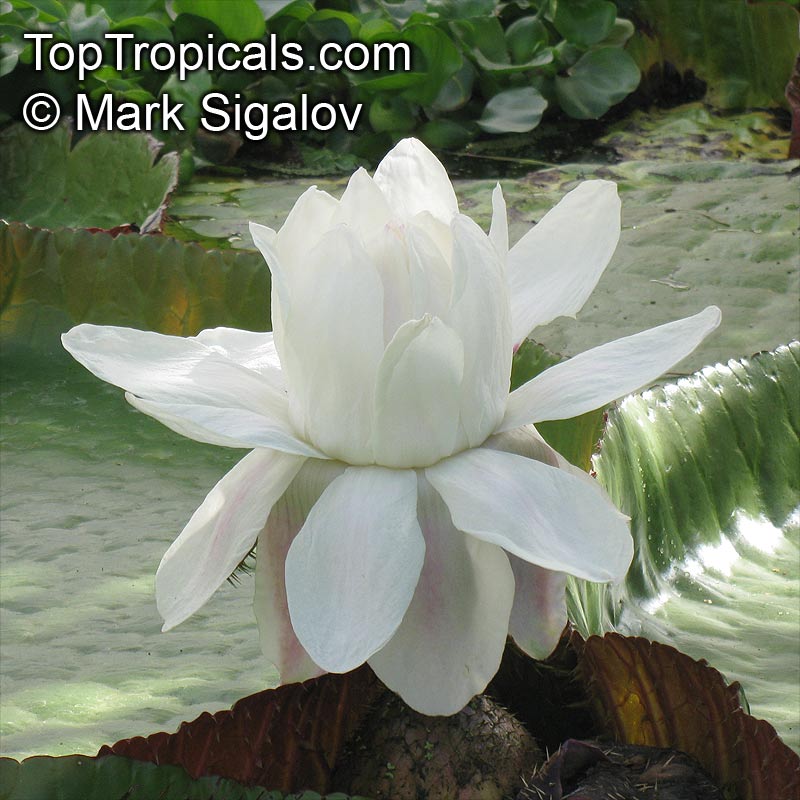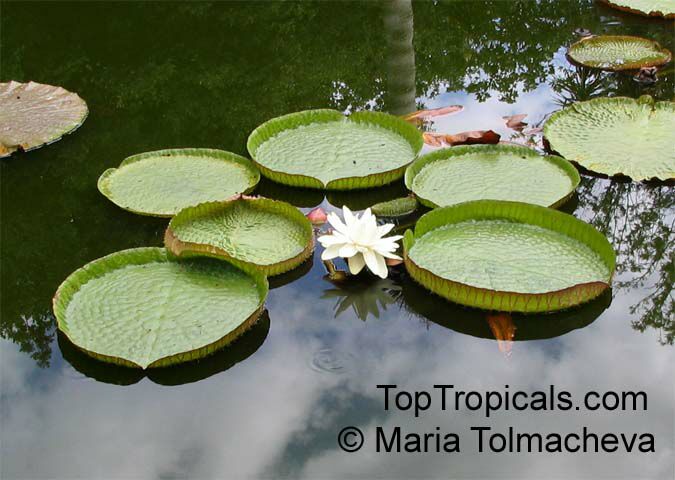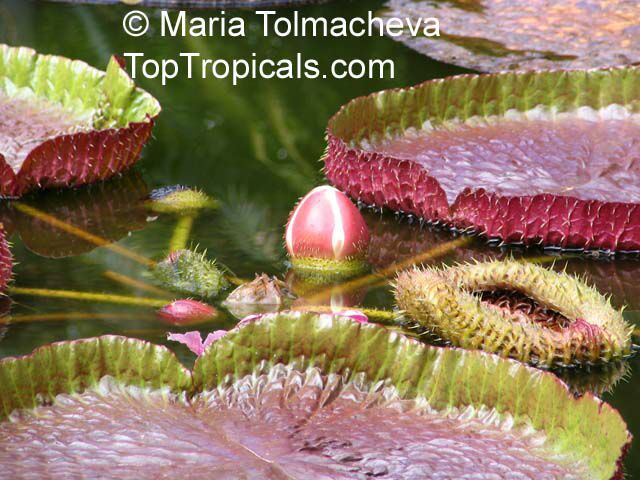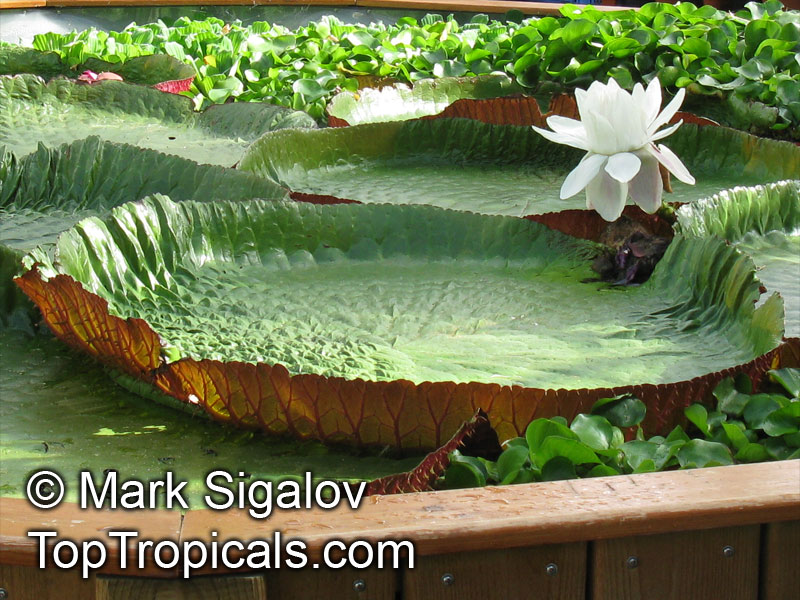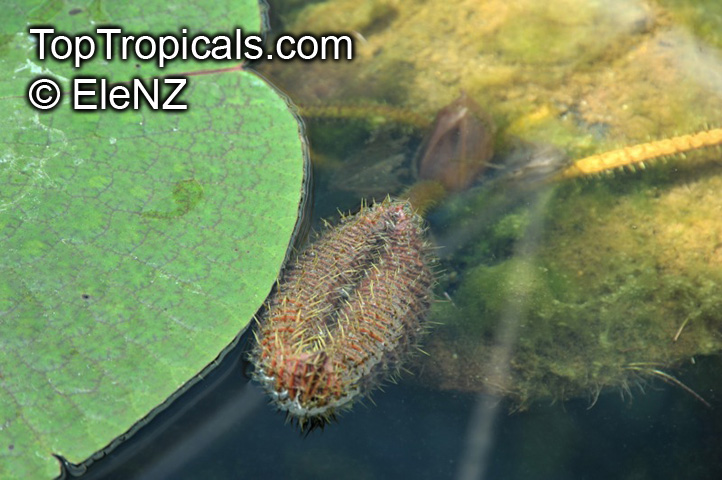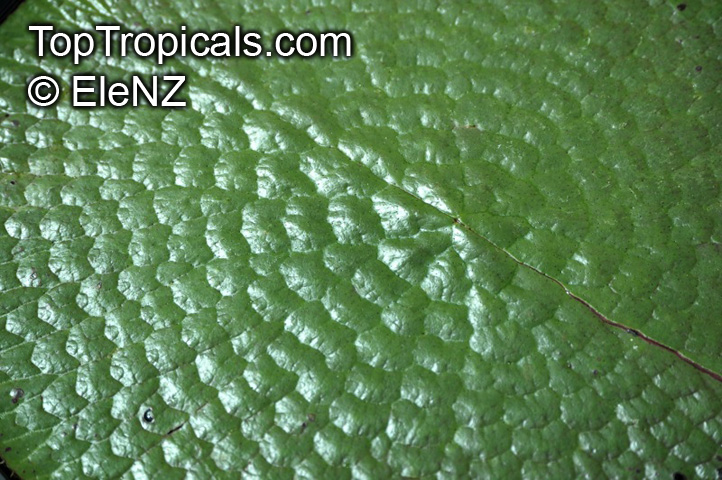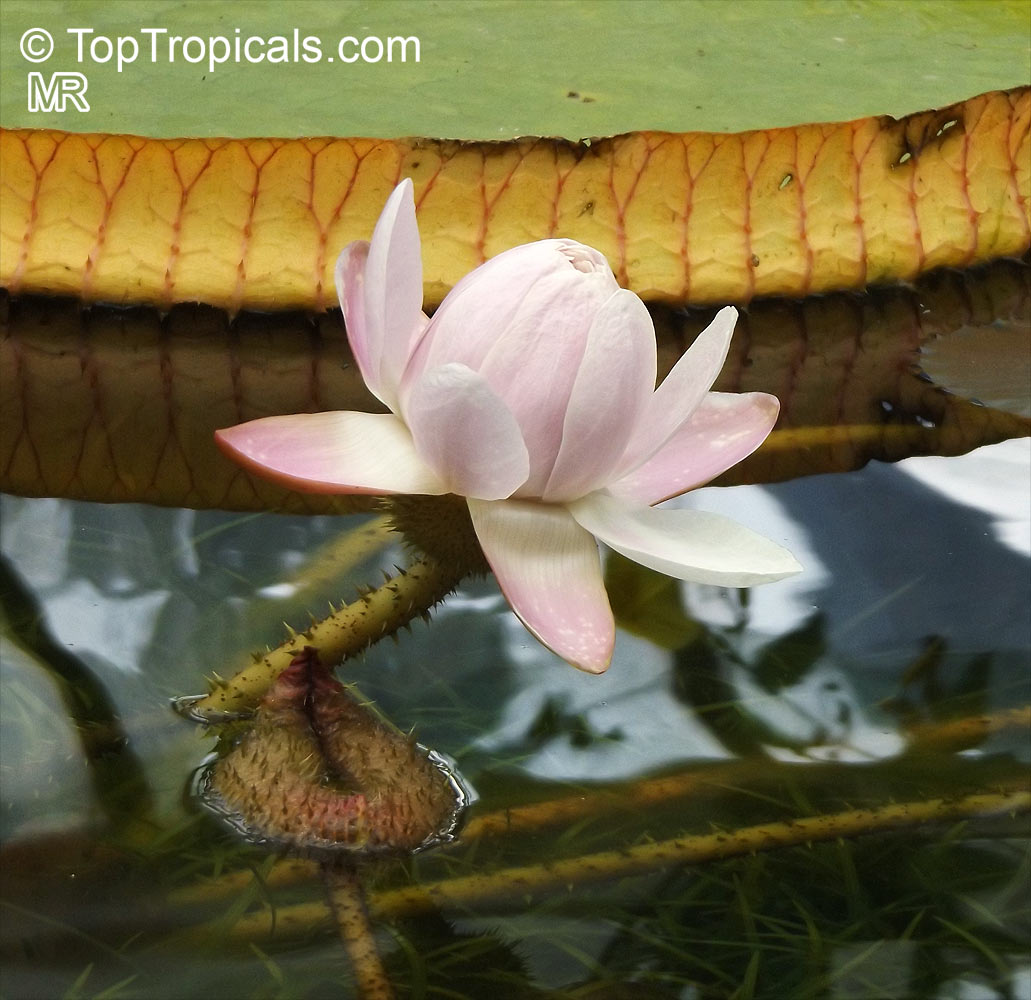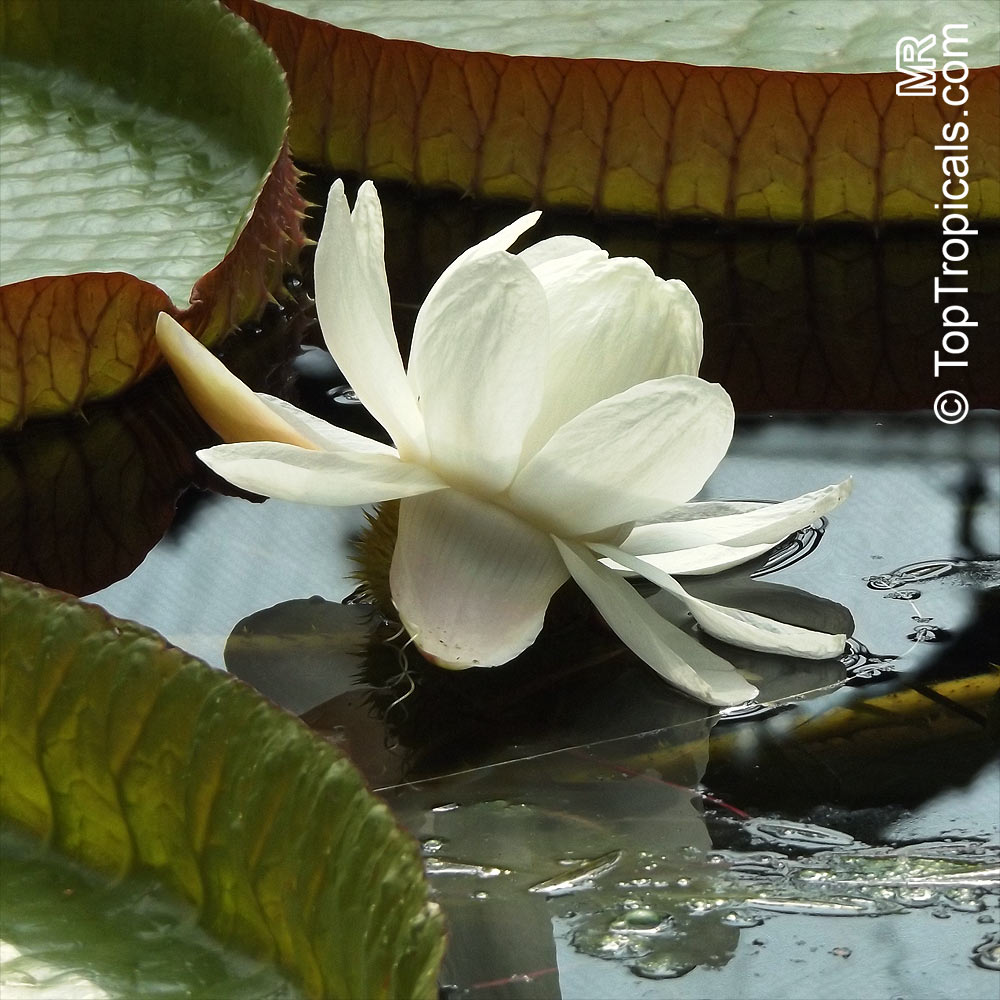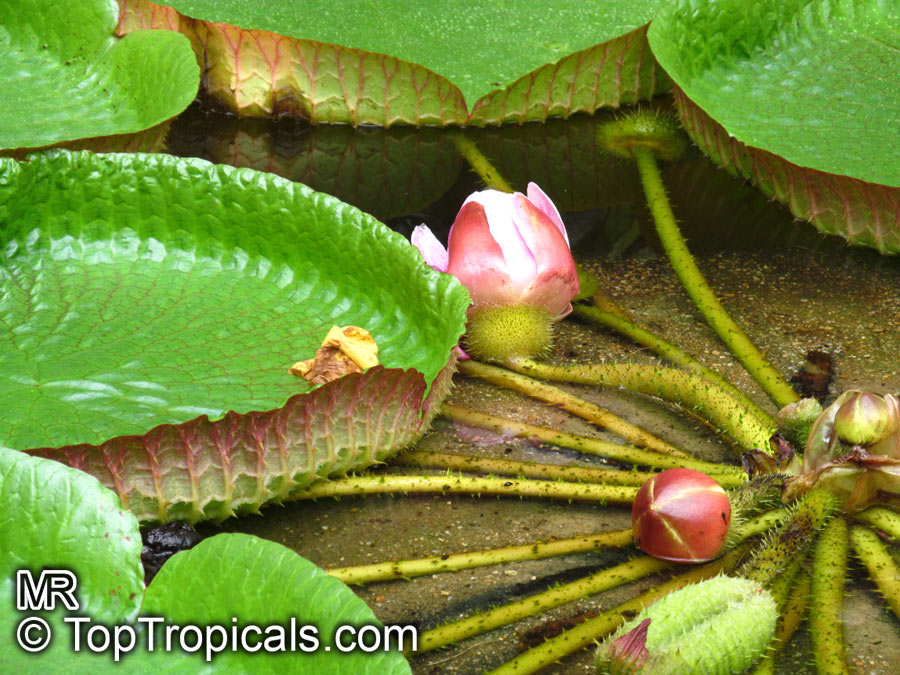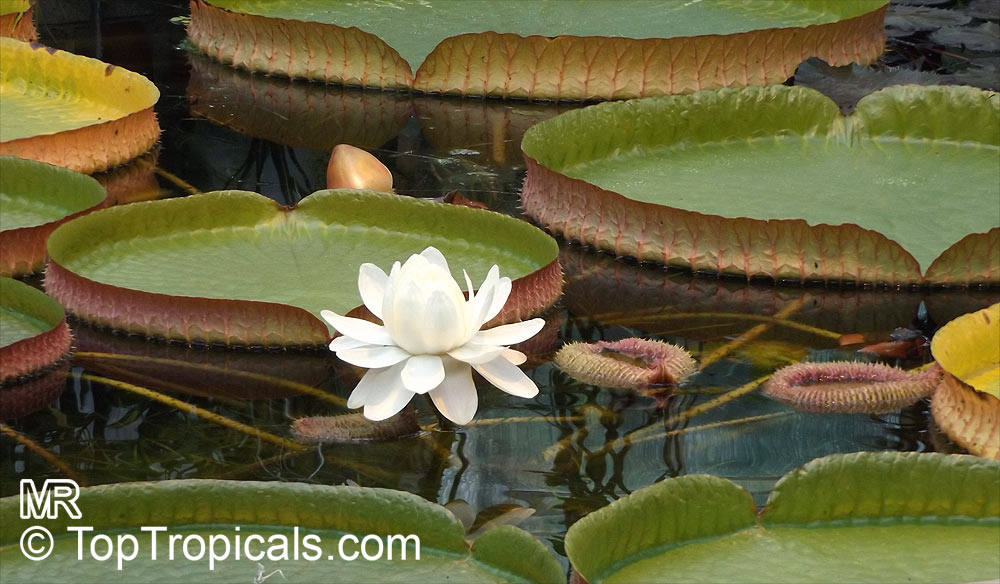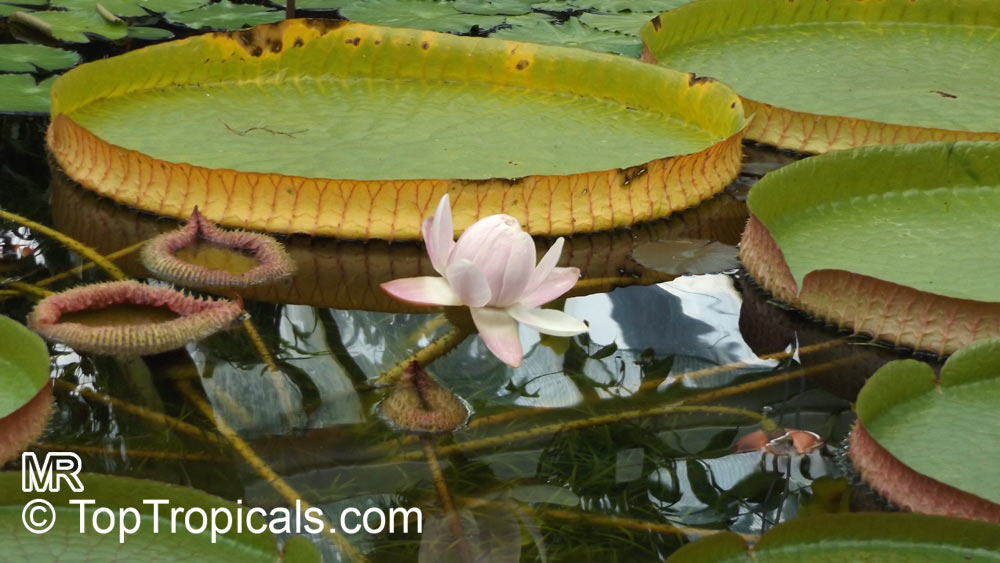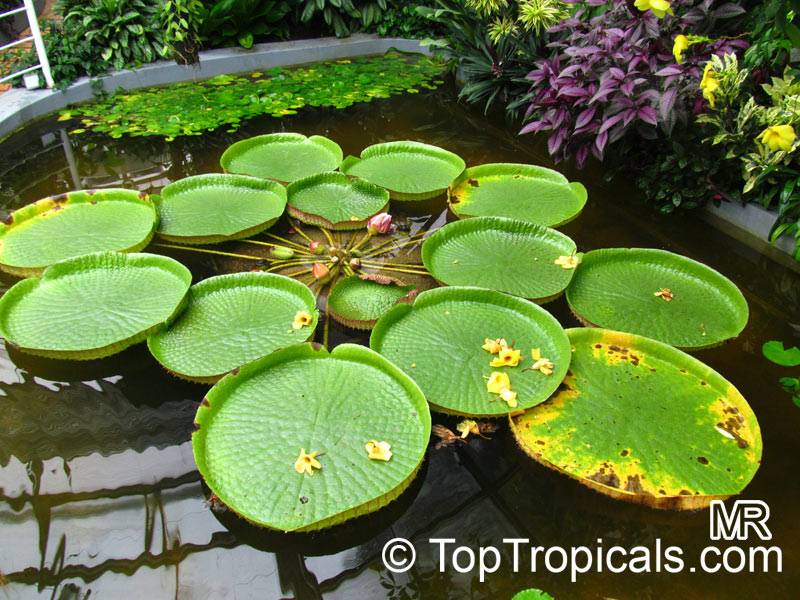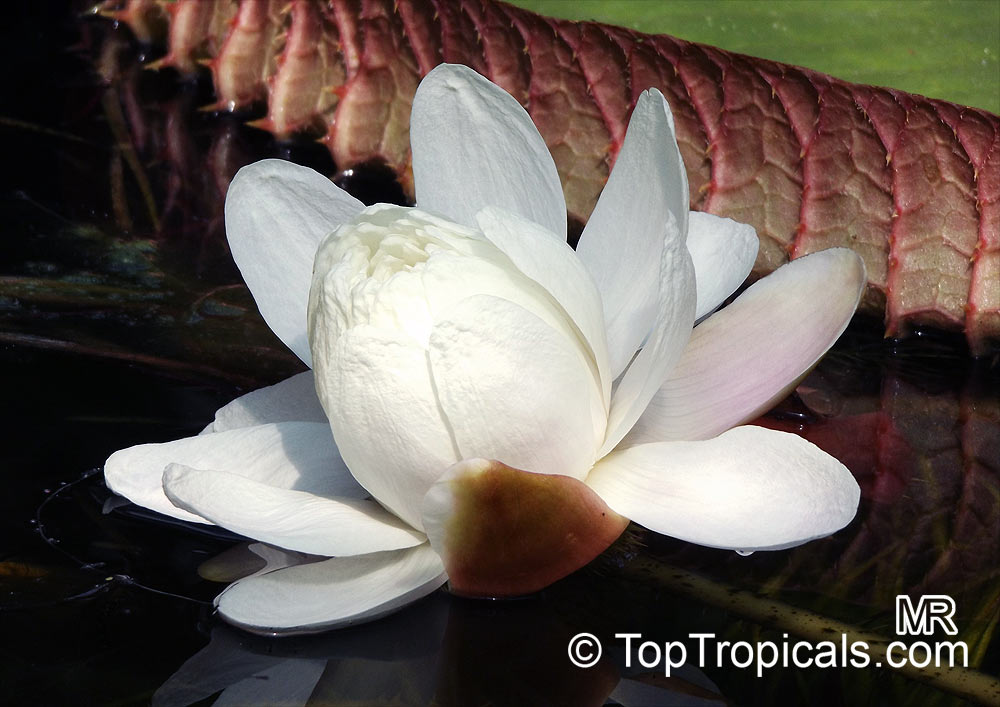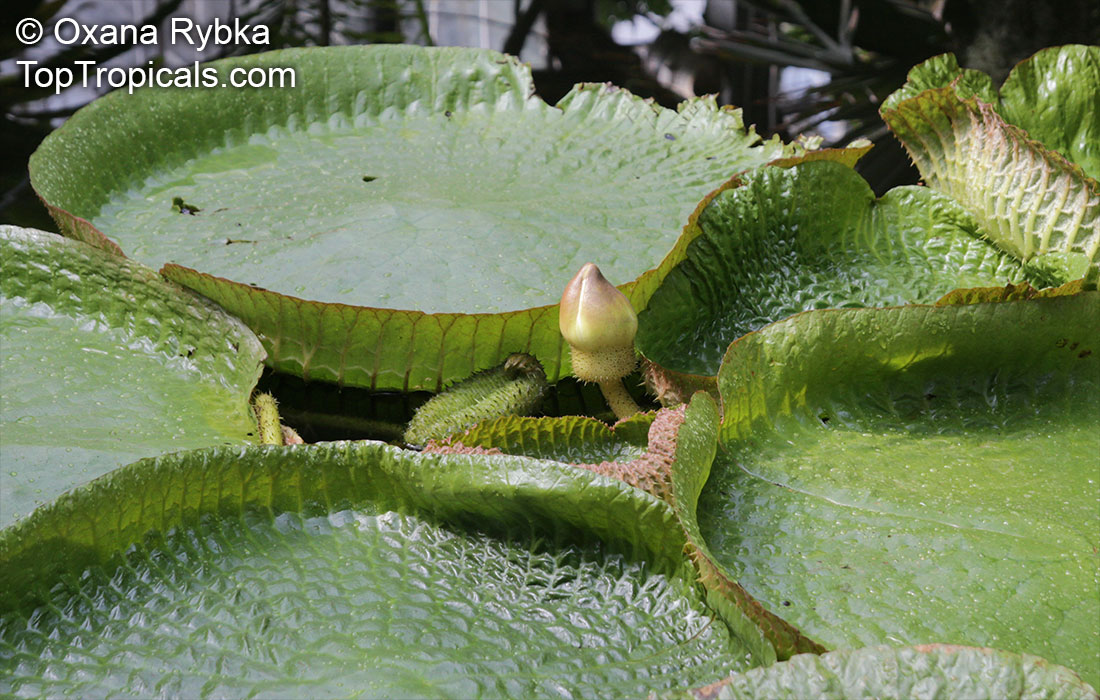Nymphaeaceae - Botanical Family
Top Tropicals Plant Encyclopedia
| Number of plants found: 4 |
Botanical name: Euryale ferox
Common names: Prickly Waterlily, Fox Nut
Family: Nymphaeaceae
Origin: Eastern Asia








The leaves have a quilted texture, although the stems, flowers, and leaves which float on the surface are covered in sharp prickles.
The plant is cultivated for its seeds in lowland ponds in India, China, and Japan.
Botanical name: Nymphaea sp.
Common name: Water Lily
Family: Nymphaeaceae










Water lilies make an excellent addition to the water garden or a pond. Nymphaea sp. (Water Lily) is a stunning and versatile plant that can create a beautiful addition to any garden. It has large, rounded leaves and gorgeous flower borne on long petioles, which often reach to the surface of the water. There are many hybrid varieties, ranging in color from pink, white, off-white, blue, lavender, purple, red, crimson, vinous, and yellow to orange.
The Water Lily is an ethnomedical plant that is easy to grow and maintain. It prefers full sun and bog or aquatic conditions. Generally, Water Lilies do best when planted in USDA Hardiness Zone 4-10. For colder climates, they can be grown in a pot in a heated environment, such as a greenhouse or conservatory.
Water Lilies will thrive when planted in nutrient-rich soil. It is important to ensure that the container is both small and shallow, as the plant will quickly outgrow the pot. The soil should be kept moist but not wet, and fertilized with a specific aquatic fertilizer once per month. As with any plant, make sure to prune regularly and trim off dead leaves and stems, which will help keep the plant healthy.
Nymphaea sp. (Water Lilies) are an attractive and practical addition to any garden, making them a great choice for any landscape. With beautiful and vibrant colors and an ability to tolerate flooding, these plants are both beautiful and hardy. With the right care, they will produce beautiful blooms that will last for many years.
Botanical names: Victoria amazonica, Victoria regia
Common name: Amazon Waterlily
Family: Nymphaeaceae
Origin: Tropical America







The pink, fragrant flowers of this aquatic plant attract both butterflies and hummingbirds, some visiting as far away as South America and then wintering in North America.
Victoria amazonica is a popular ornamental plant in gardening and water garden displays, particularly in tropical and sub-tropical regions, as it requires a warm climate. These elegant blooms can range in color from white to off-white, or even light pink depending on the night they are opened. This is the largest known waterlily, with leaves reaching to 6ft across. Whilst Victoria amazonica loves full sun, it can also grow in semi-shade. The waterlily can be planted in a wide range of aquatic habitats including lakes, marshes, ponds, seasonal pools and slow-moving rivers, as well as in a bog garden.
In order to thrive, the Amazon Waterlily needs neutral or acidic, still water with a high nutrient content. The plants should be planted in soil within containers, and then placed in the water. In colder regions, it may be necessary to bring the Amazon Waterlily potted container indoors during wintertime. The container should be placed in shallow water in a warm spot out of direct sunlight, such as an empty bathtub. Allowing water to evaporate will leave the roots out of the water. The water depth should never get lower than 6 inches though. A balanced fertilizer specifically designed for waterlilies should be applied every two weeks. If the waterlily is grown in a pond, no additional fertilization is required as the fish, frogs, etc. in the pond will help keep natural nutrients levels optimal.
This exotic waterlily can be grown in USDA Zones 9-11, but if planted in colder regions, growers should be aware that the plant may not survive the winter months.
Overall, Victoria amazonica is an elegant and showy plant that offers an array of benefits and makes an excellent feature for any water garden.
Botanical name: Victoria cruziana
Common name: Santa Cruz Water Lily
Family: Nymphaeaceae
Origin: South America






Victoria cruziana can be grown in cooler waters than its sister within the genus, the more familiar giant waterlily Victoria amazonica.
Use link to repeat this search:
https://toptropicals.com/cgi-bin/garden_catalog/cat.cgi?search_op=and&keyword_op=and&language=e&family=Nymphaeaceae
&number=10&no_change_lang=1&user=tt&sale=1&first=0
